Greetings from sunny Moscow! We have enjoyed lovely weather during week four, with warmer temperatures and less rain than we had experienced during the first half of our program. Students have taken advantage of the beautiful weather to explore Moscow with their host families and with new friends they have made.
This blog post will focus on last week’s field trip to Mosfilm, among the largest and oldest film studios in the Russian Federation and in Europe. Its output includes most of the more widely-acclaimed Soviet-era films. Mosfilm was established in 1923, and construction of the current studio complex in Sparrow Hills (adjacent to Moscow State University) began in 1927. Below are photos from our tour of Mosfilm.
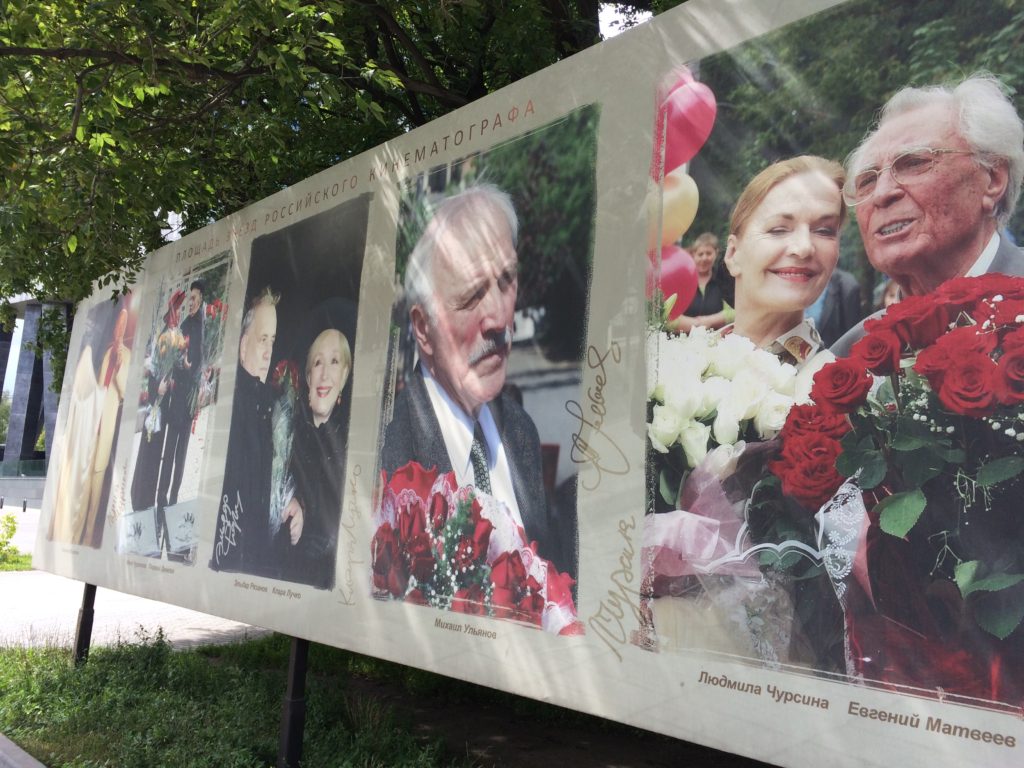

Stars of Russian cinematography
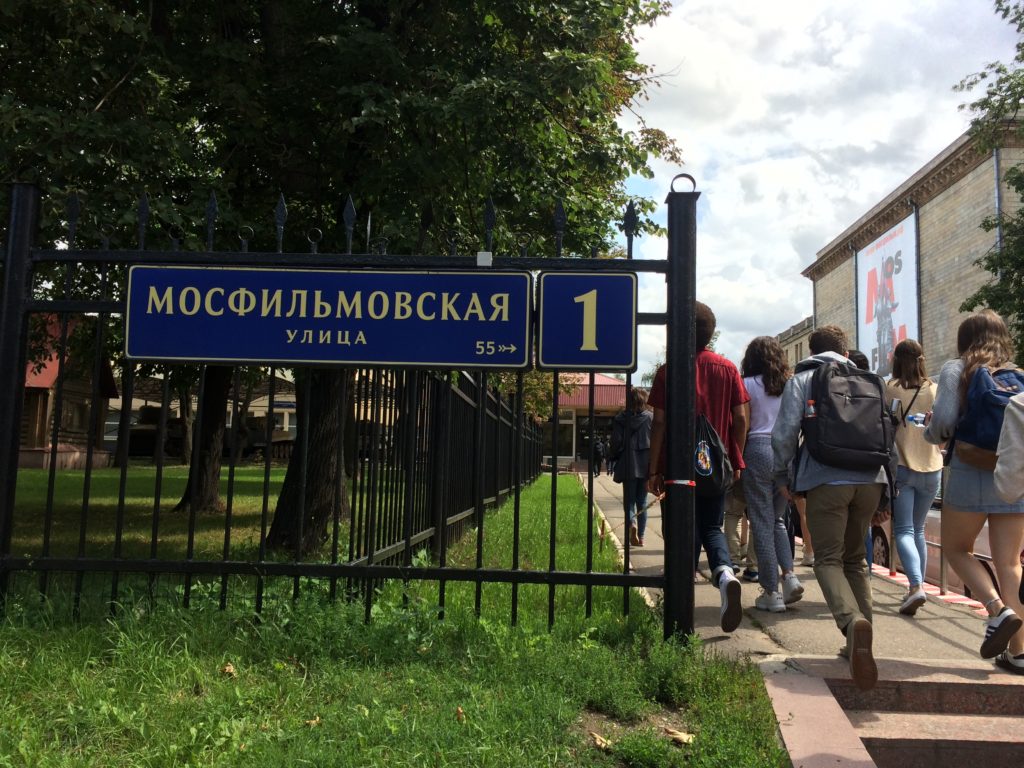

The entrance to Mosfilm. The studio is located, appropriately, at 1 Mosfilm Street.
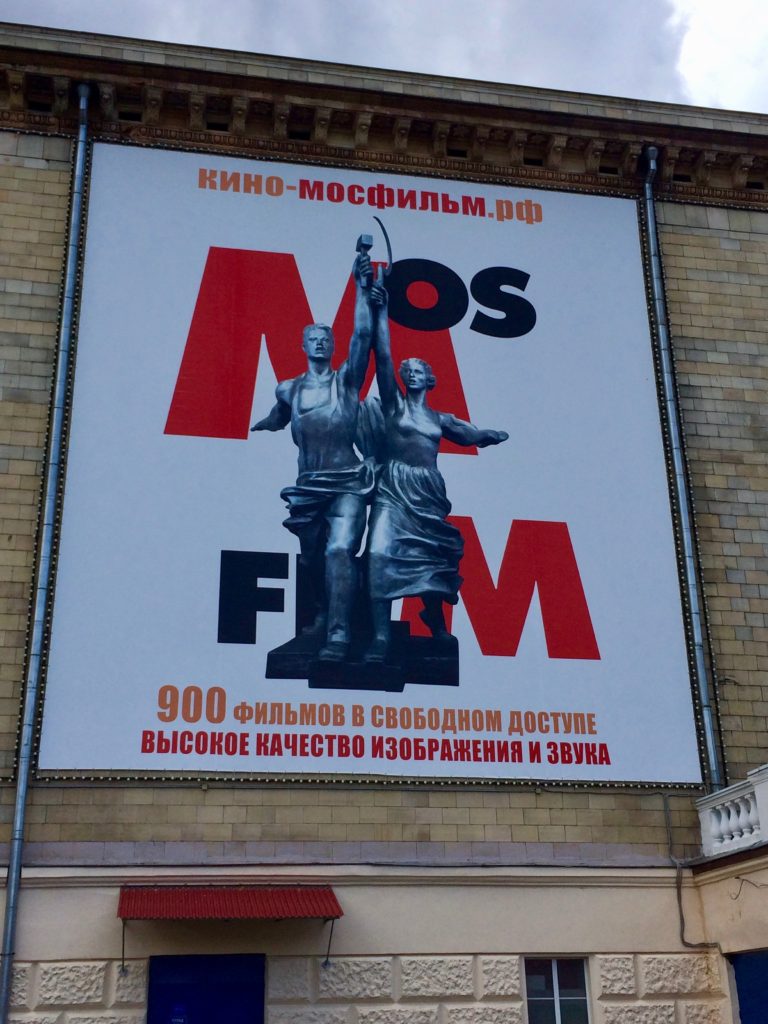

An advertisement on the grounds of the studio for the website cinema.mosfilm.ru, which offers free online access to 900 Russian films.
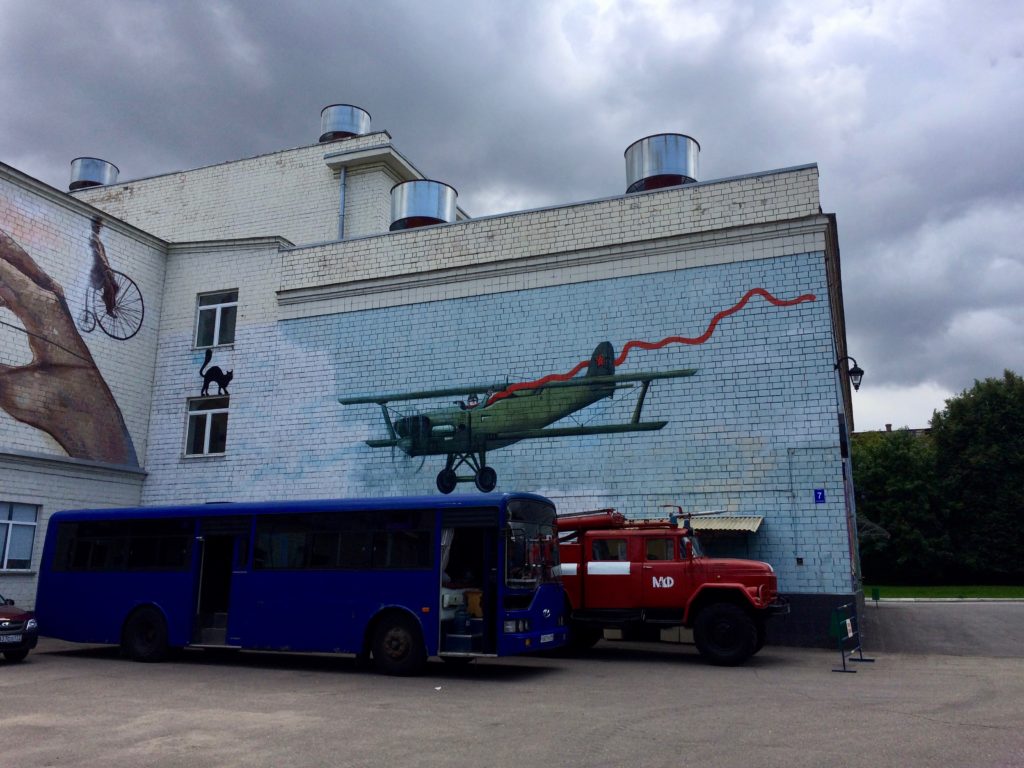

Several of the buildings on the grounds of the studio feature murals with scenes from famous Russian films.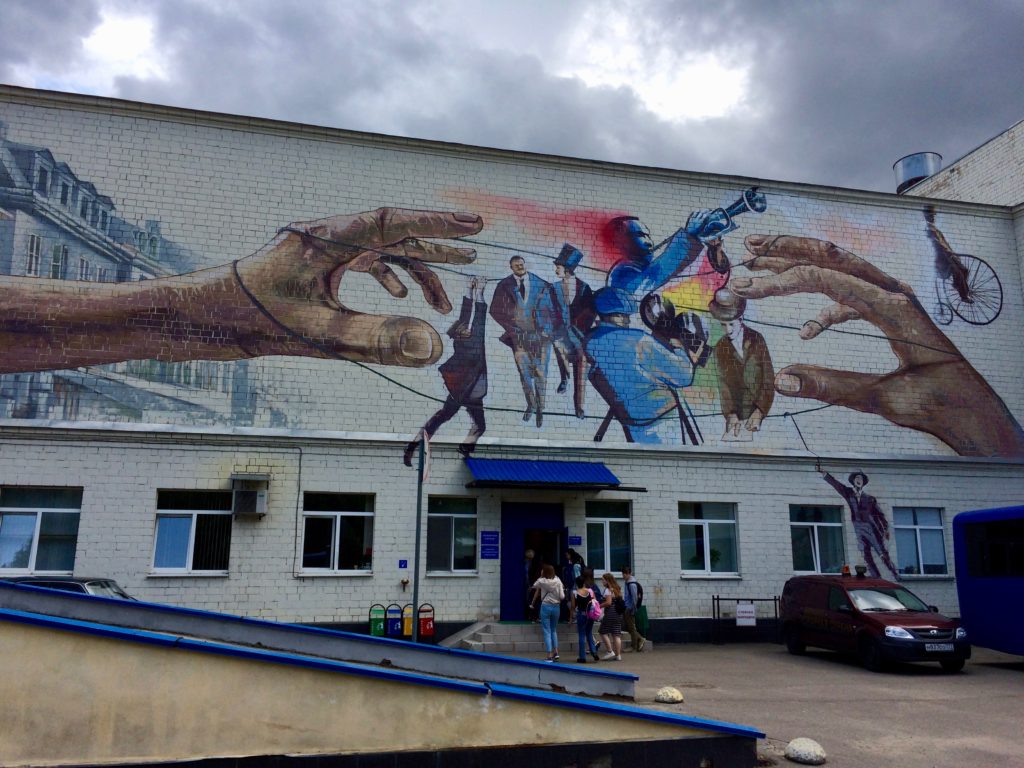

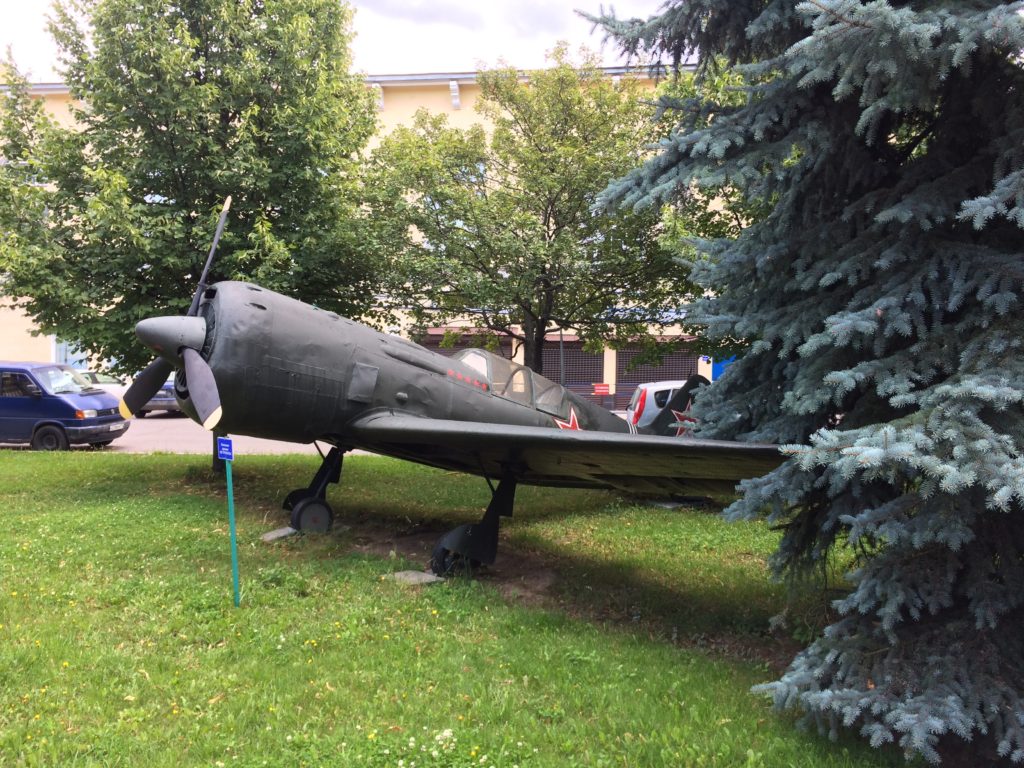

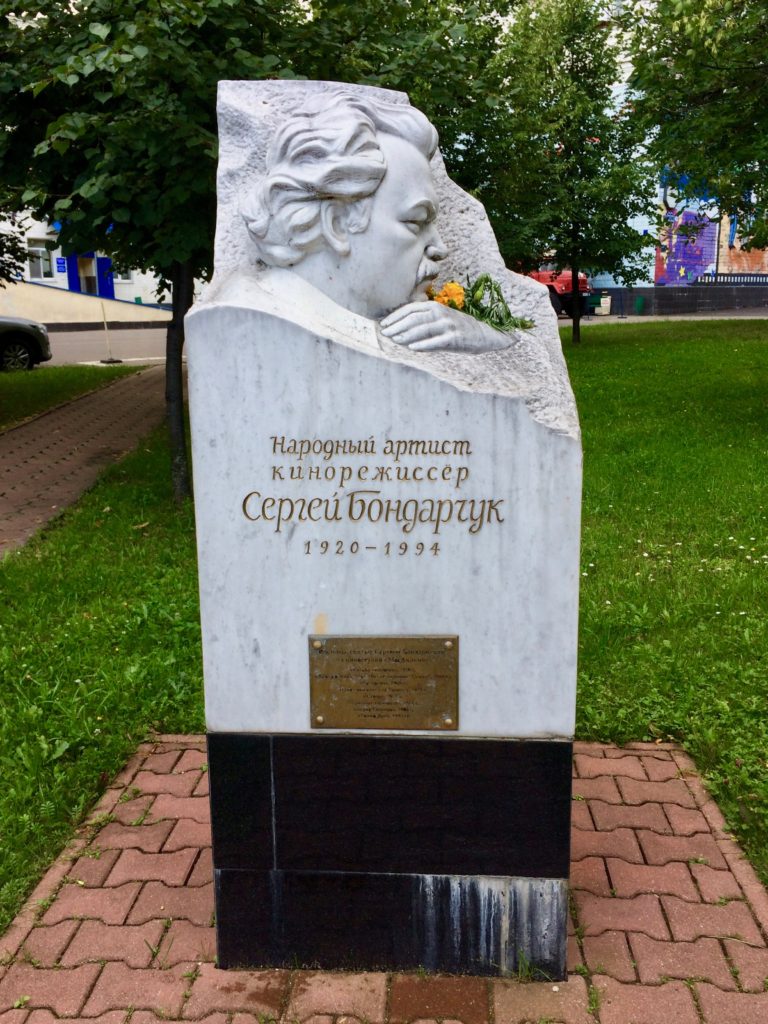

A monument to Sergei Bondarchuk, an Academy Award-winning Soviet film director, screenwriter, and actor. At the age of 32, he became the youngest Soviet actor ever to receive the highest state award in his field: the title of People’s Artist of the USSR. He is best known in the west for his epic production of Tolstoy’s War and Peace, which featured a running time of more than seven hours, took six years to complete, and won him an the Academy Award for Best Foreign Language Film in 1968.
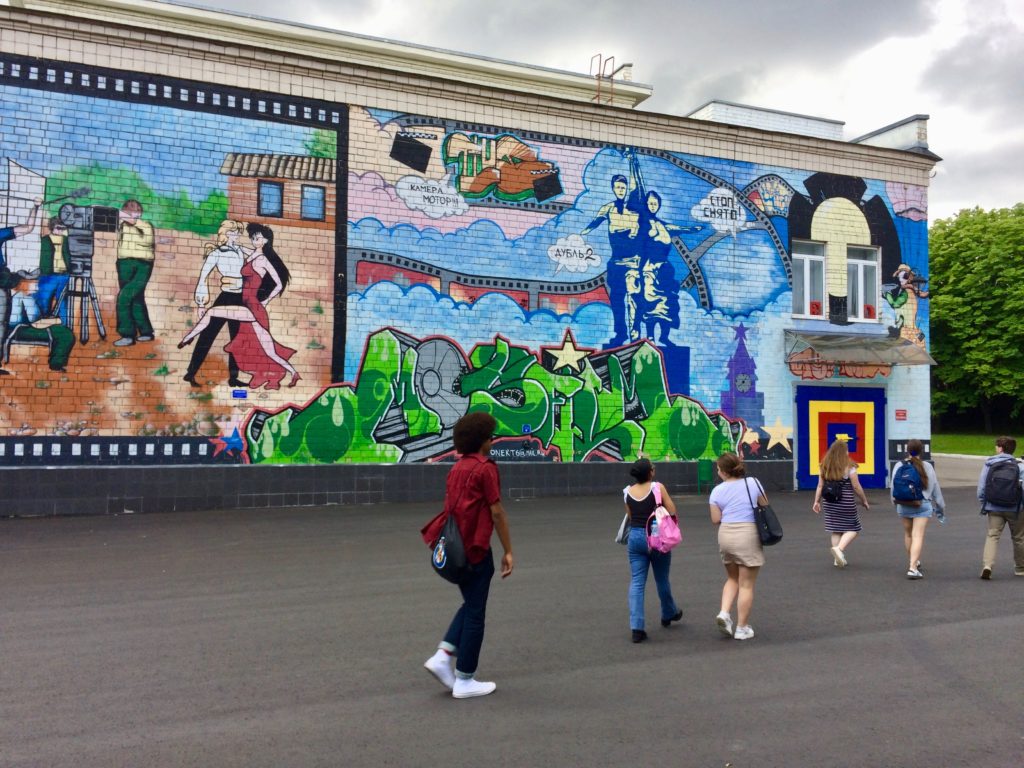

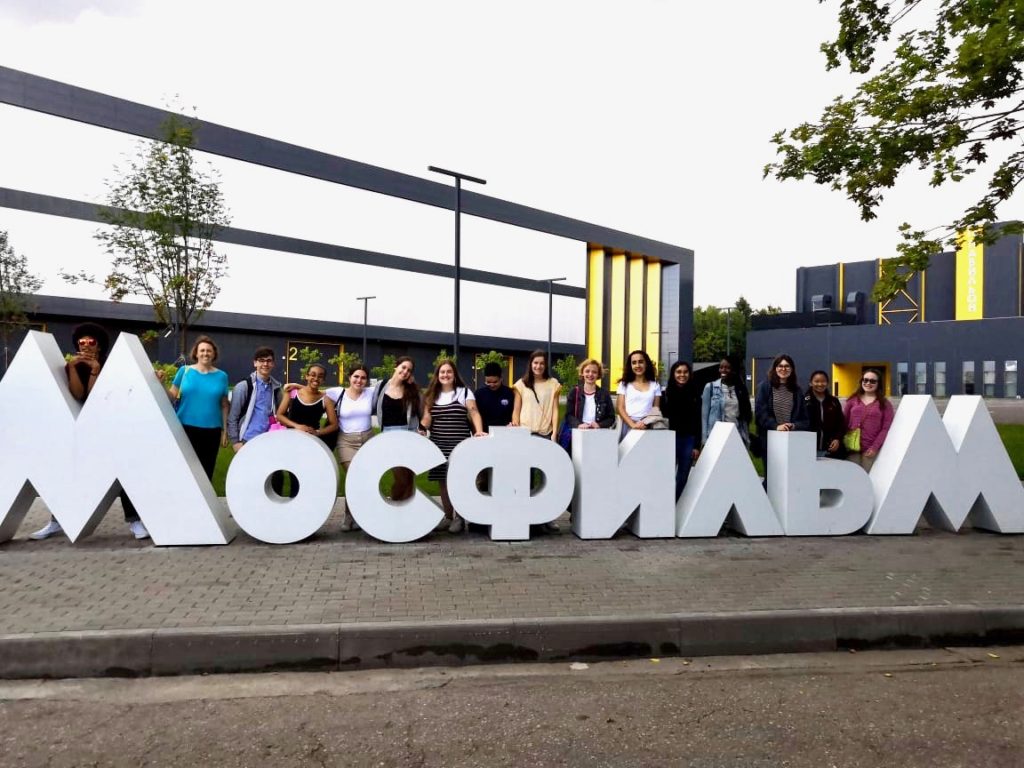

We love Mosfilm! From left to right: Darius, Dr. Chilstrom, Jake, Andrea, Ava, Megan, Zoe, Xavier, Katie, Katya, Gabriella, Marilyn, Taina, Jordan, Elizabeth, and Erin.
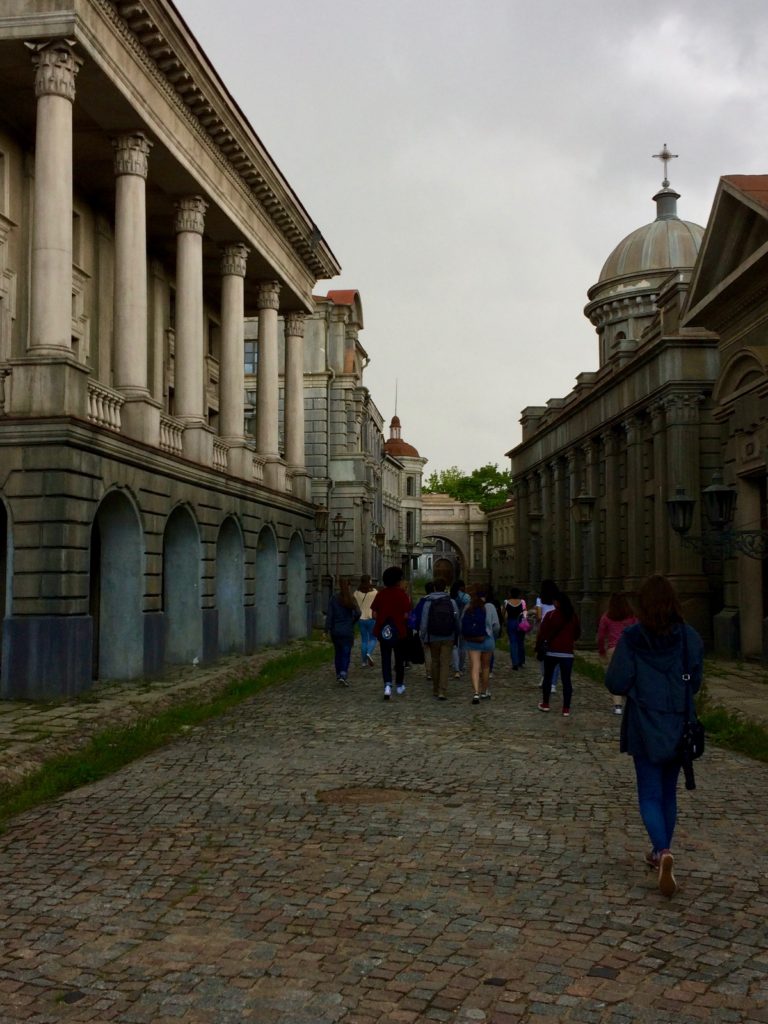

It began to rain as we wandered through the set of 19th-century St. Petersburg. This set was featured in the 2017 Mosfilm production of Tolstoy’s Anna Karenina.
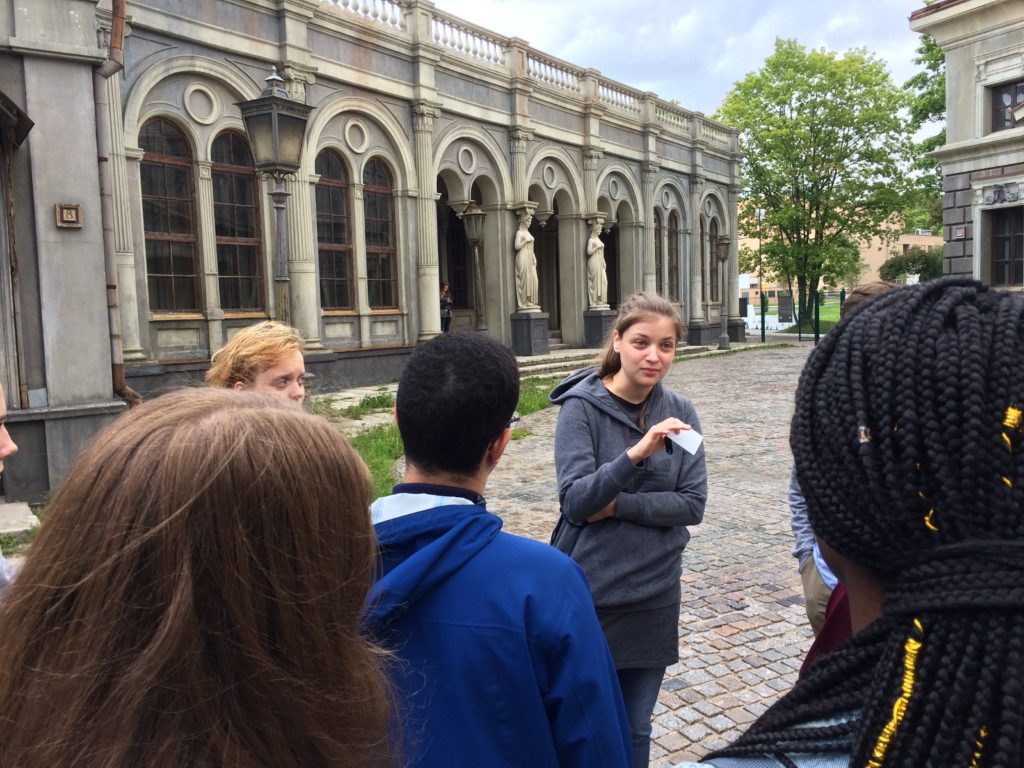

Our guide spoke impeccable English and offered us an in-depth tour of several sights on the studio grounds.
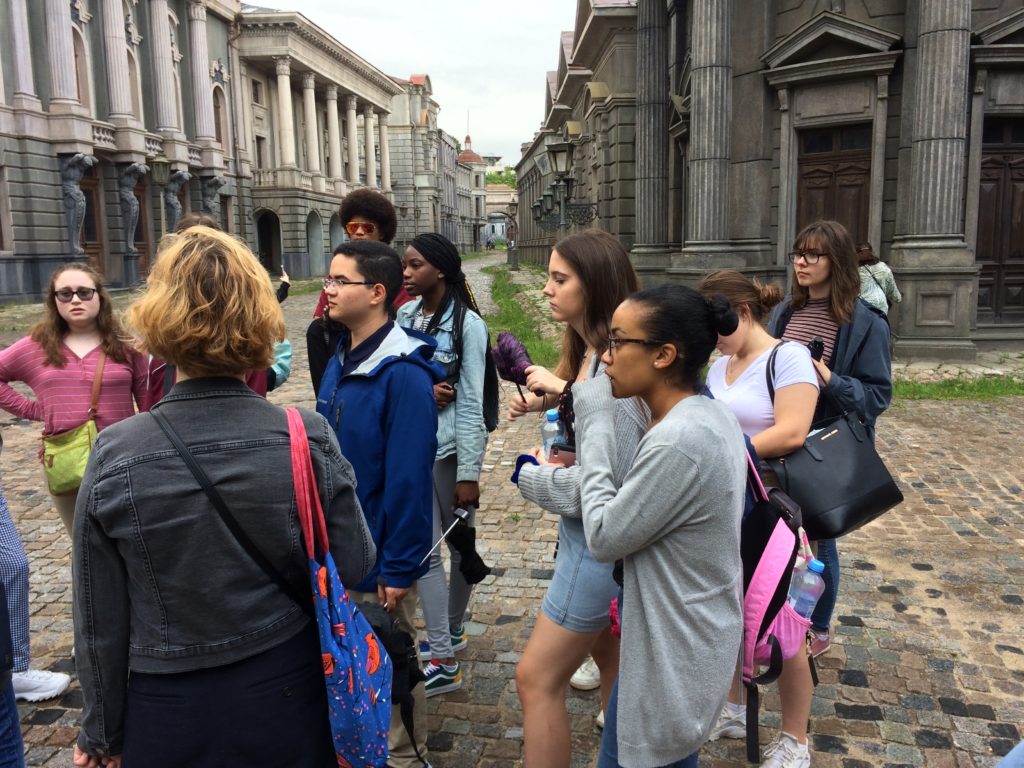

Learning more about the plot of Anna Karenina. Notice the second building on the left. You’ll see the same building in the photo below, taken from the film Anna Karenina.
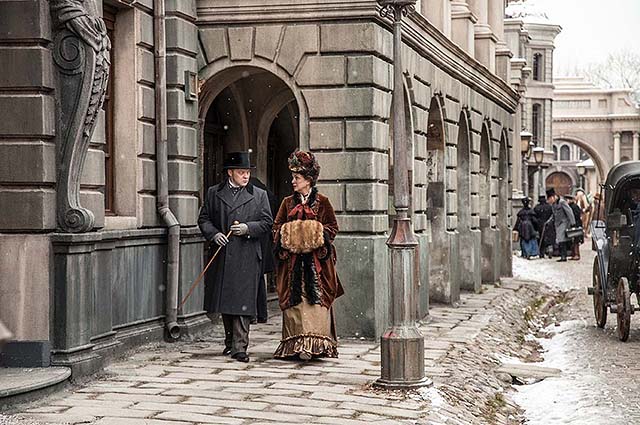

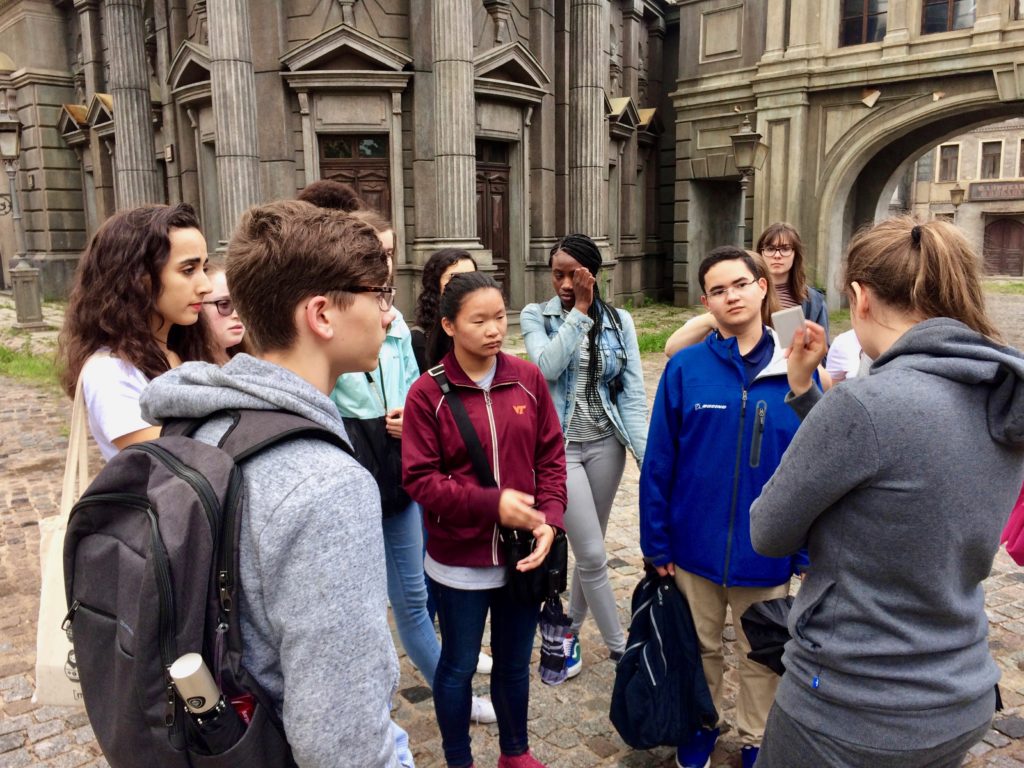

Notice the gray building behind the students. You can see the same building in the photo below, taken from the film.
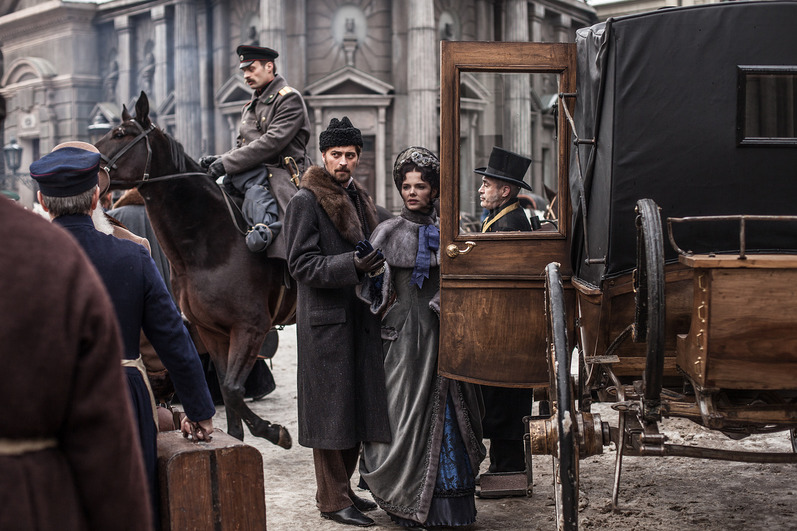

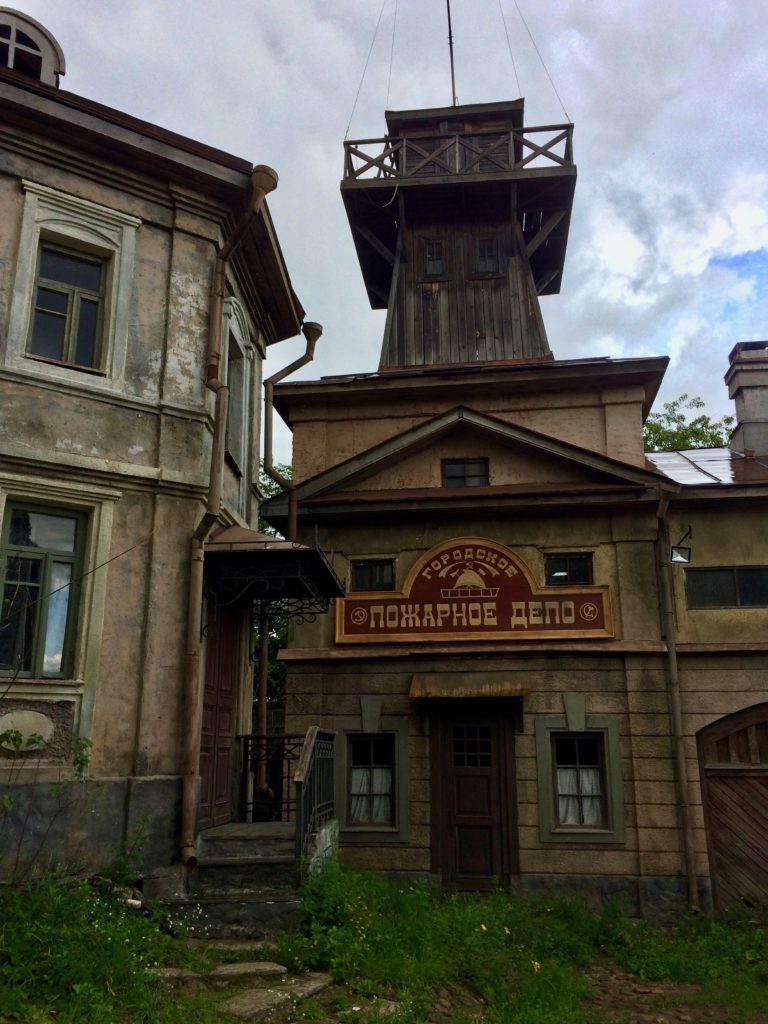

The other section of this open-air set is used for filming outdoor scenes of 19th-century Moscow. Here is a fire station.
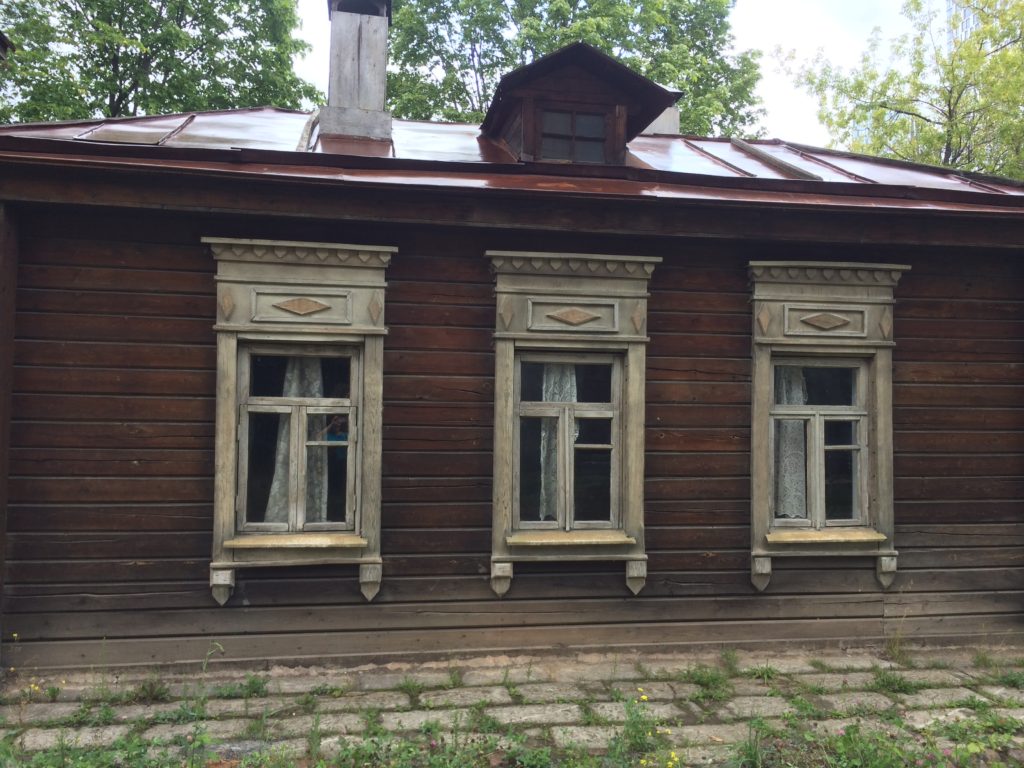

This is what a typical wooden Russian house looked like at the time. Such homes are still prevalent in smaller communities.
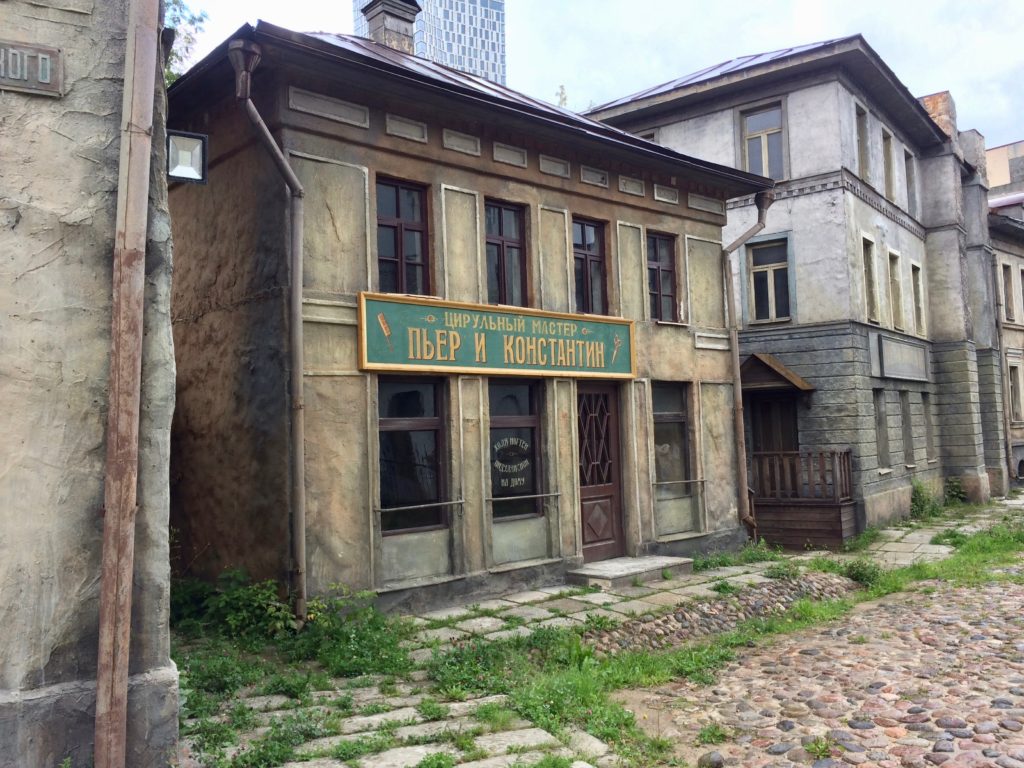

“Pierre and Constantine, Master Barber”
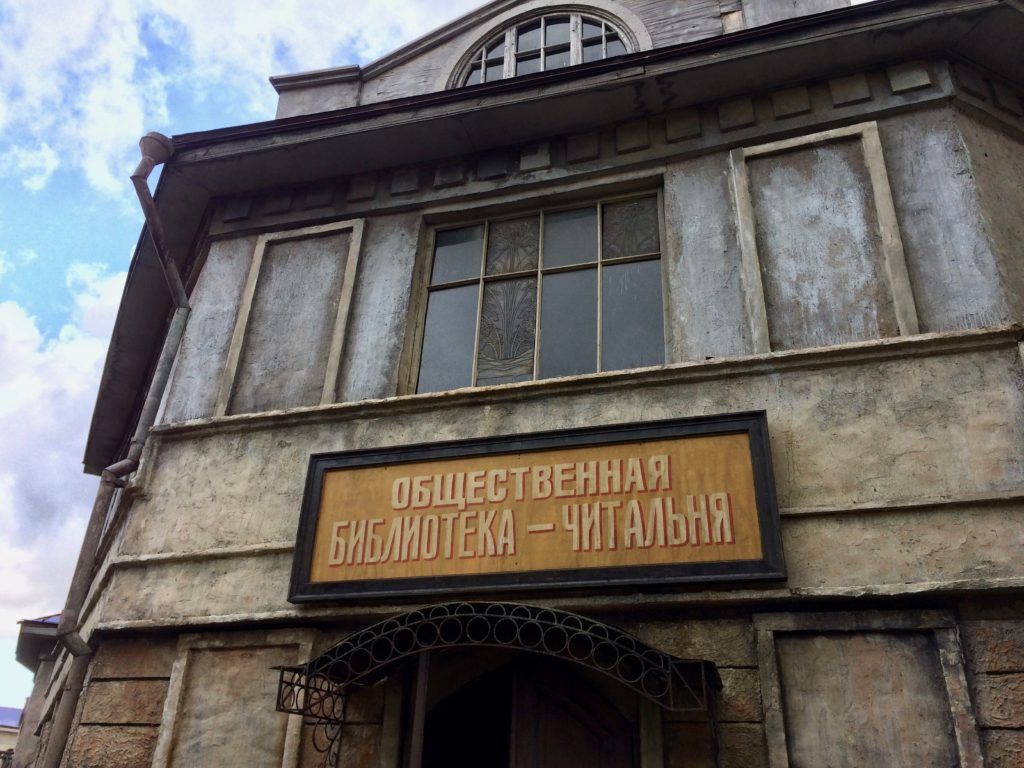

“Public Library and Reading Room”
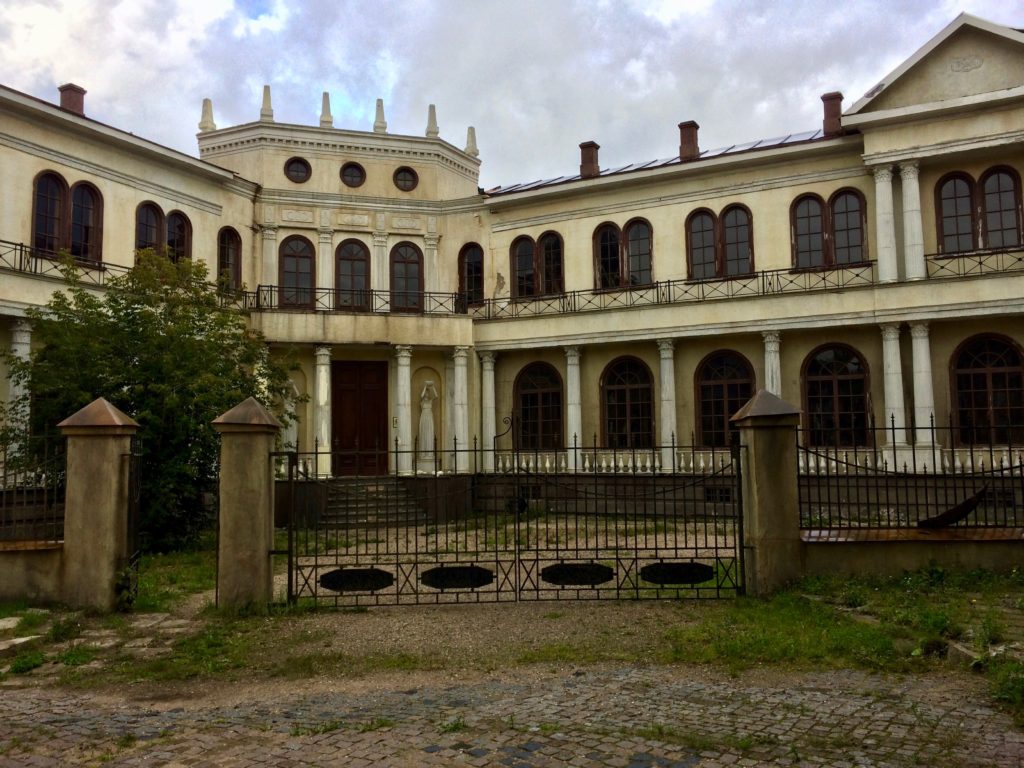

After wandering the streets of 19th-century St. Petersburg and Moscow, we moved indoors to see other sets, including the interior of a church. According to our tour guide, photography is not allowed inside Orthodox Churches, so Mosfilm constructed a set that resembles the inside of a church. (No photos of the set.)
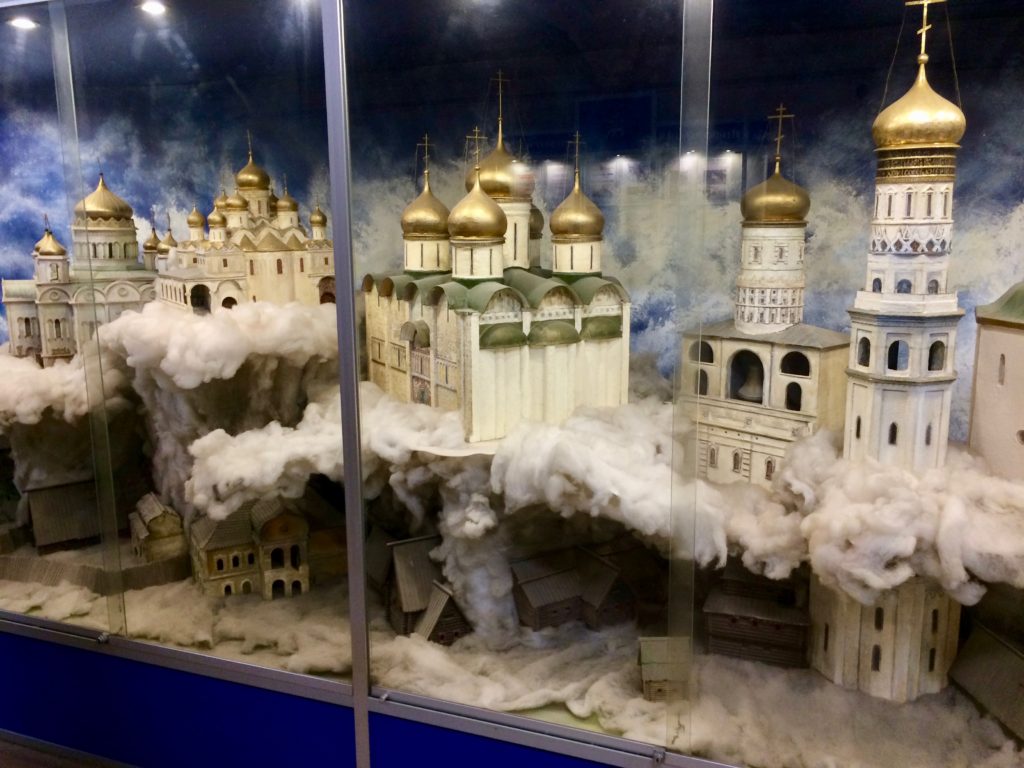

A model of the Moscow Kremlin cathedrals.
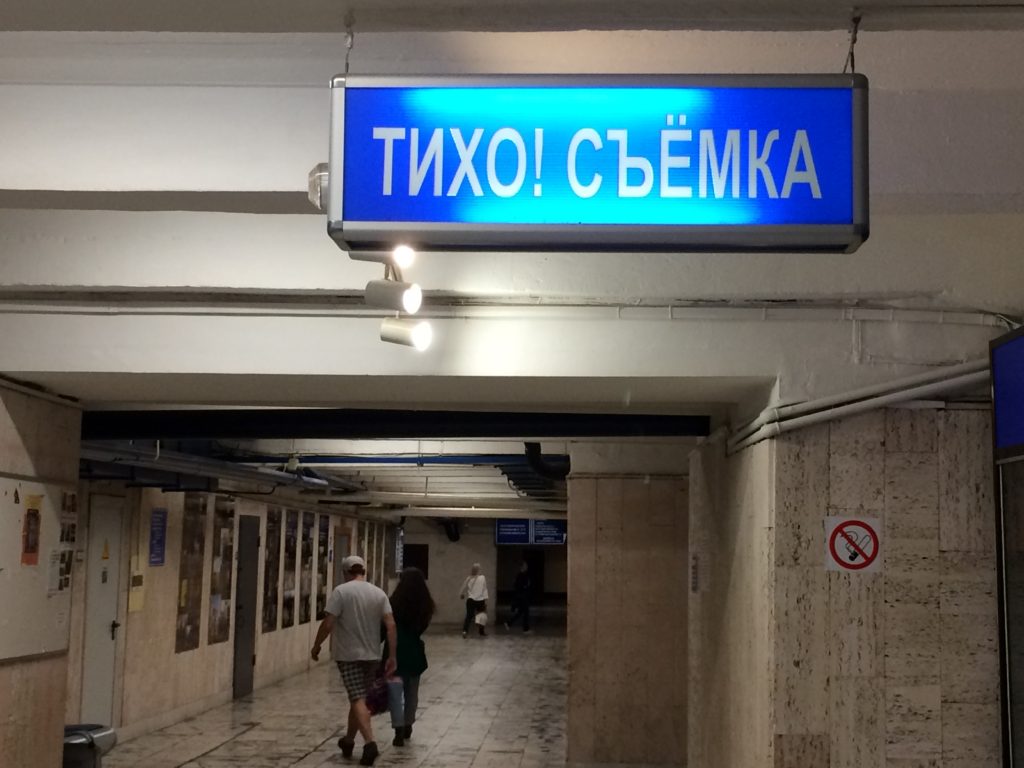

“Quiet! Filming.”
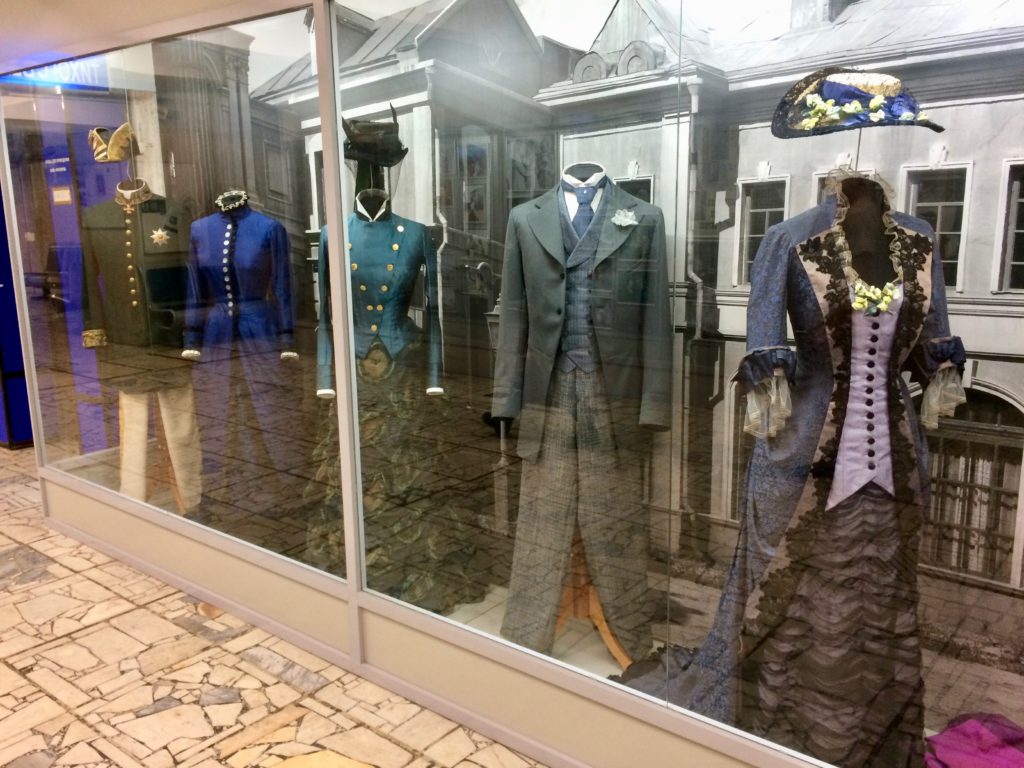

Over 100 dresses–each unique–were featured in Anna Karenina. The main character (Anna Karenina) appeared in a new dress in every scene. Notice the dress and hat on the right-hand side of the photo. You can see Anna Karenina, played by Elizabeta Boyarskaya, wearing this dress and hat in the scene below.
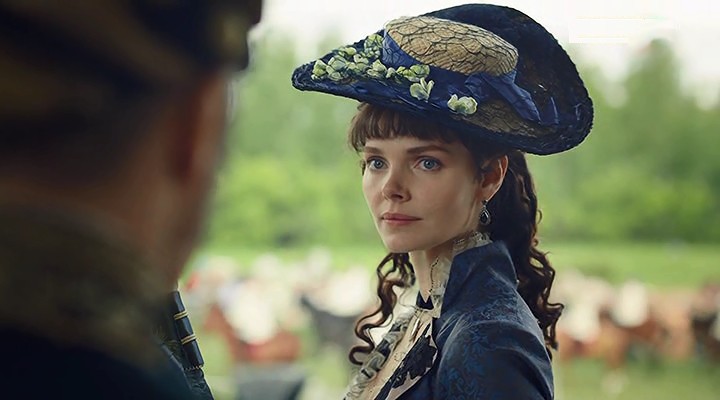

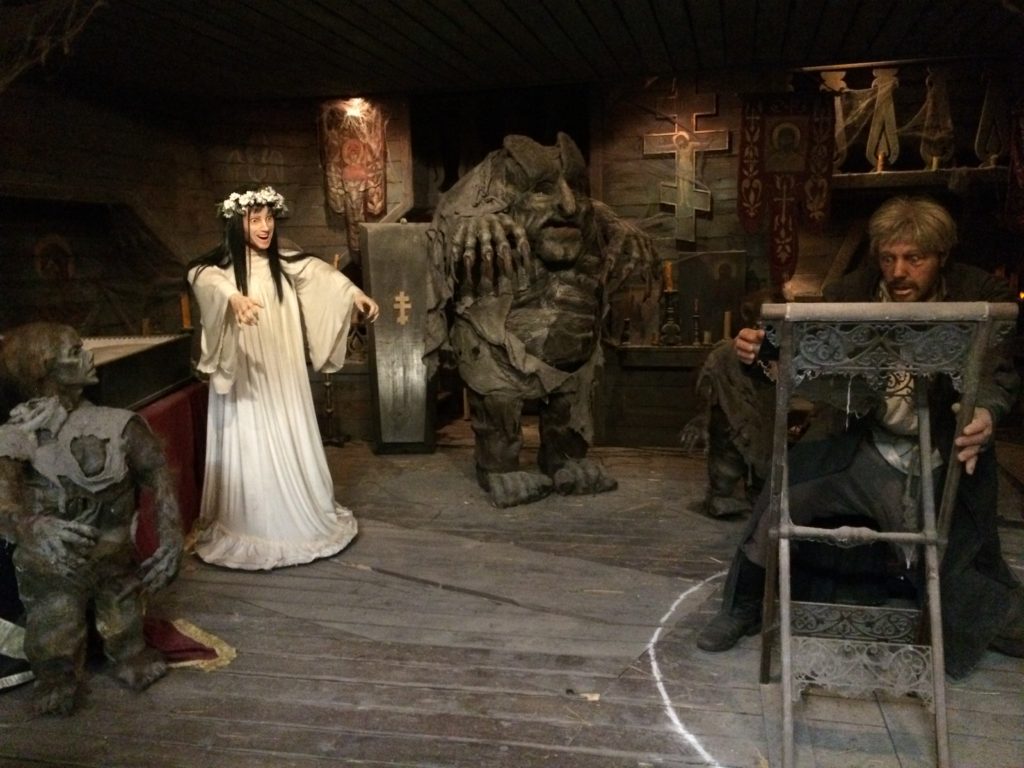

The set from the 1909 film Viy, based on the short story of the same name by Nikolai Gogol. Viy was the first horror movie produced in Russia.
Our next stop was the section of the Mosfilm Museum featuring classic cars that have appeared in Mosfilm productions over the years.
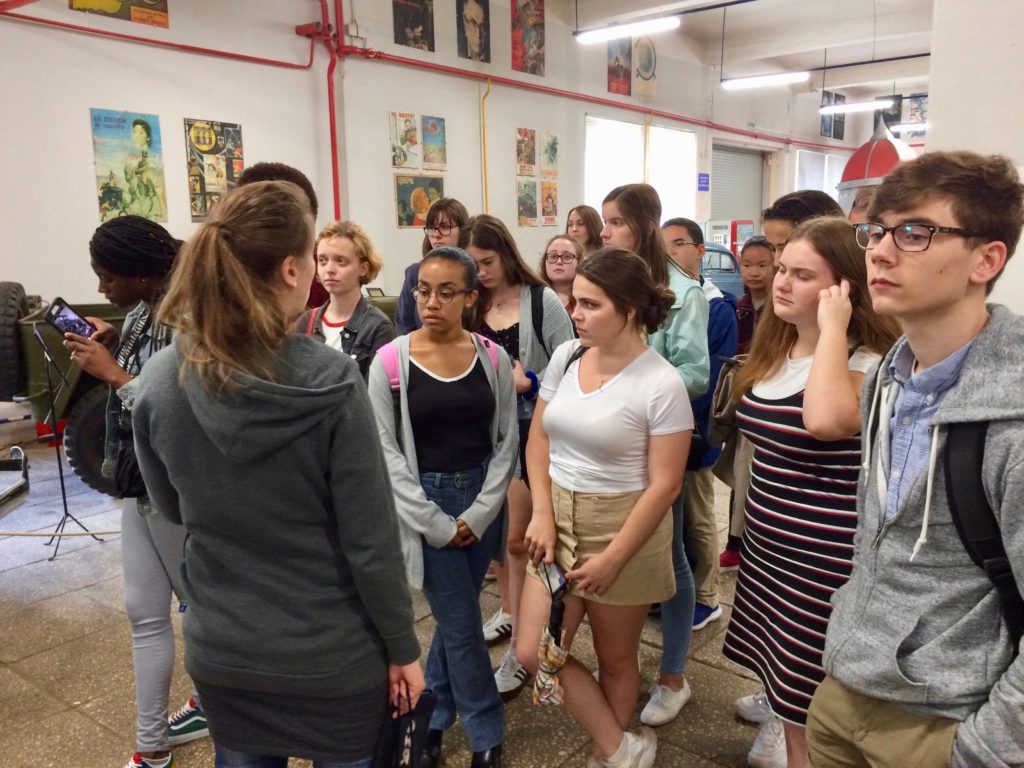

Our tour guide discussed some of the most famous cars and then allowed us to take pictures with some of them.
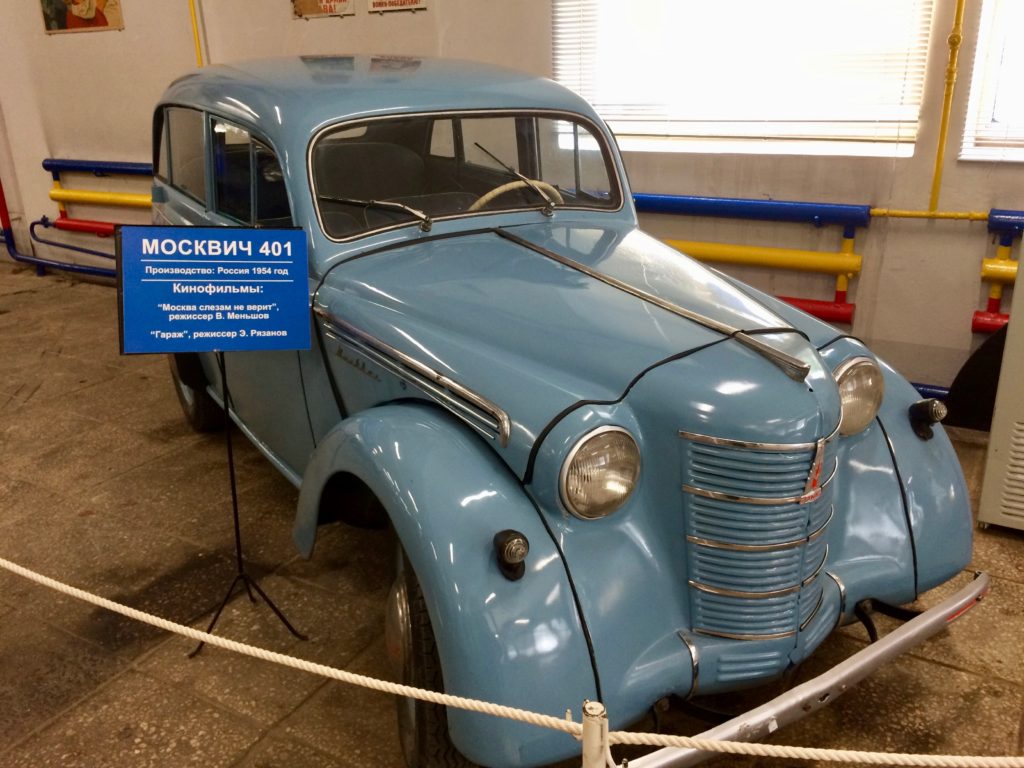

This Moskvich 401, produced in 1954, was featured in the 1980 film Moscow Does Not Believe in Tears, which won the Academy Award for Best Foreign Language Film.
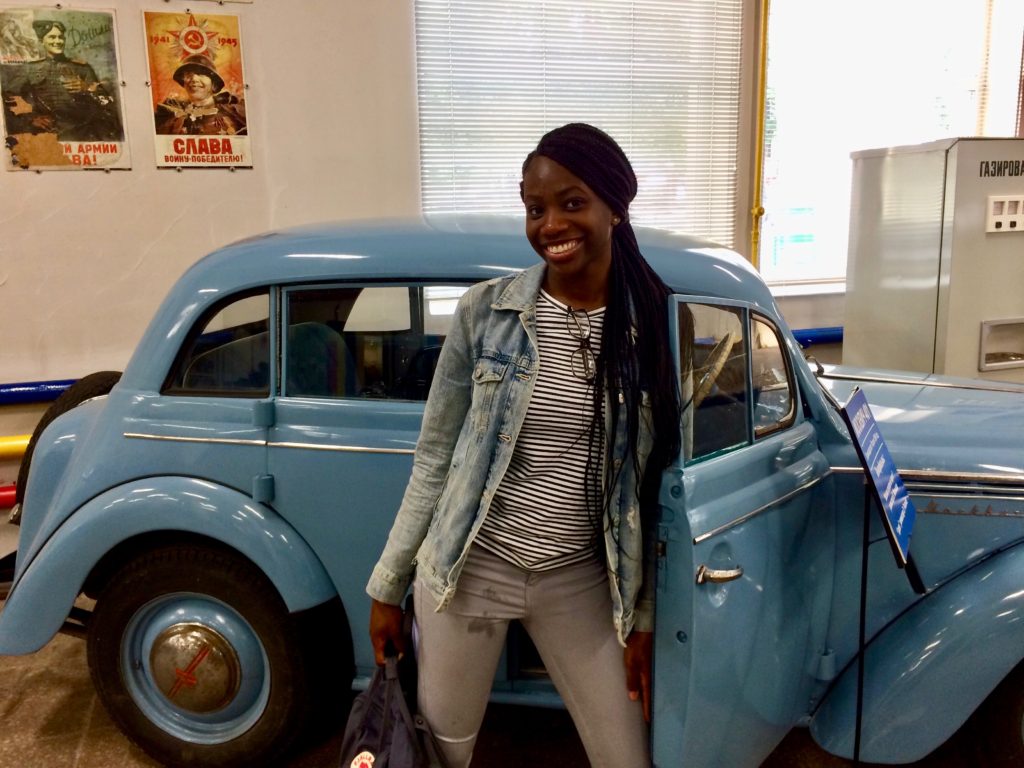

Taina likes the Moskvich!
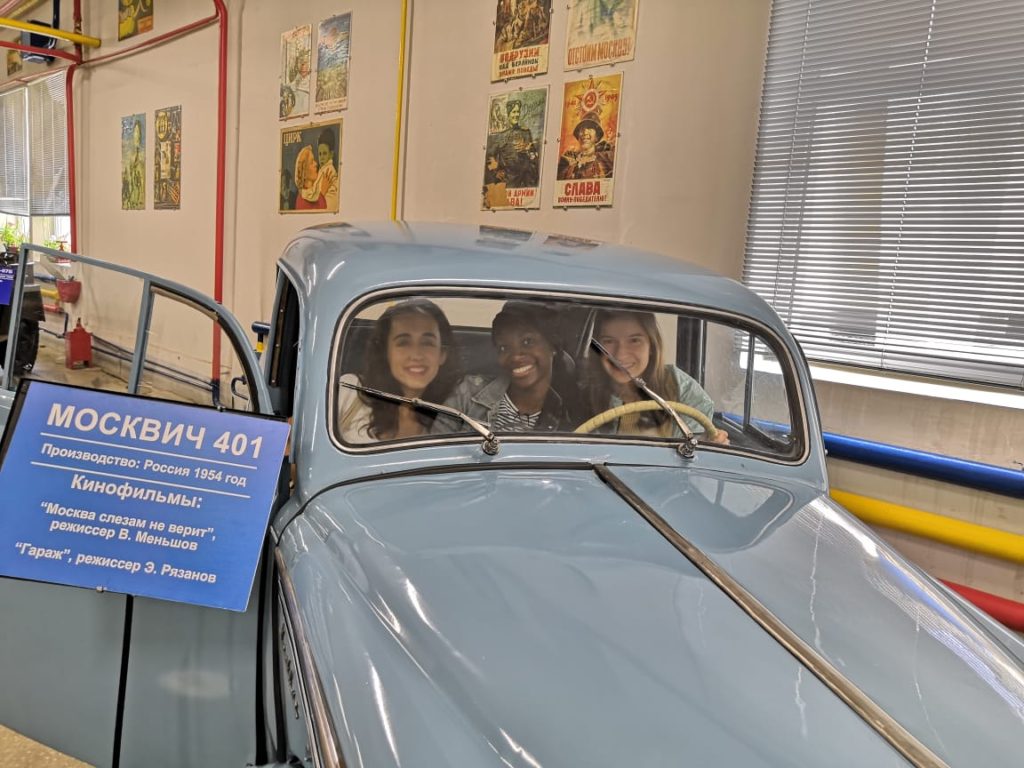

Gabriella, Taina, and Katie are fans of this little blue car.
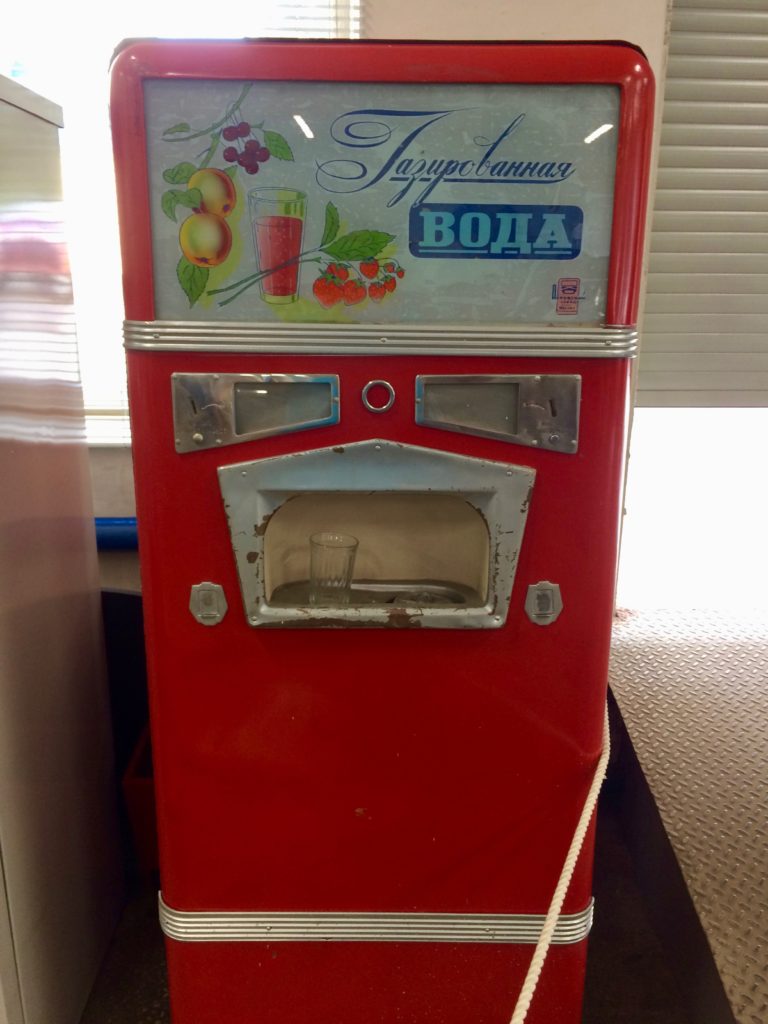

This dispenser of carbonated water was also featured in the film. (This particular model, the AT-114, was produced in the 1960’s.)
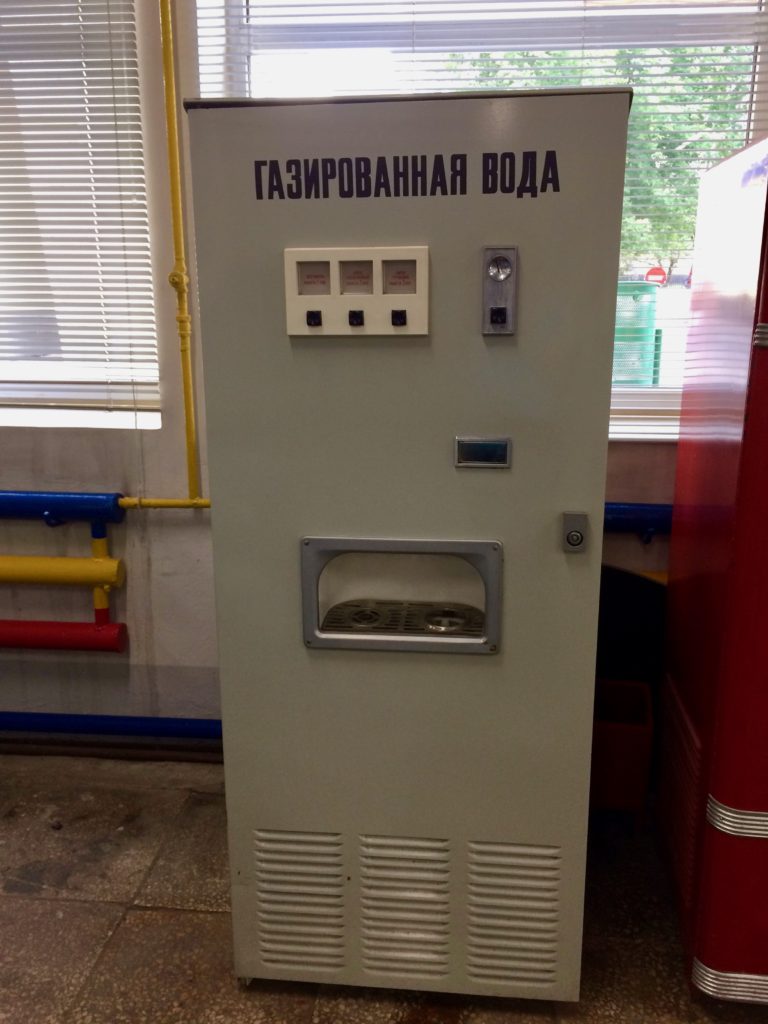

This vending machine, from the late Soviet period, was also featured in the film. Here is a little background about these vending machines. The first Soviet vending machine selling sparkling water appeared in 1937. Soon after, such machines began appearing in Moscow and throughout the Soviet Union. Many of those born in the USSR still remember clearly: a glass of plain carbonated water cost one kopeck, whereas a glass of carbonated water with syrup sold for three kopecks. Glasses in these machines were reusable – a customer had only to rinse it on a special tray after someone else had drunk from the glass. Certain models of these vending machines offered one-use paper cups, but these machines were less widely used than ones that featured a reusable glass.
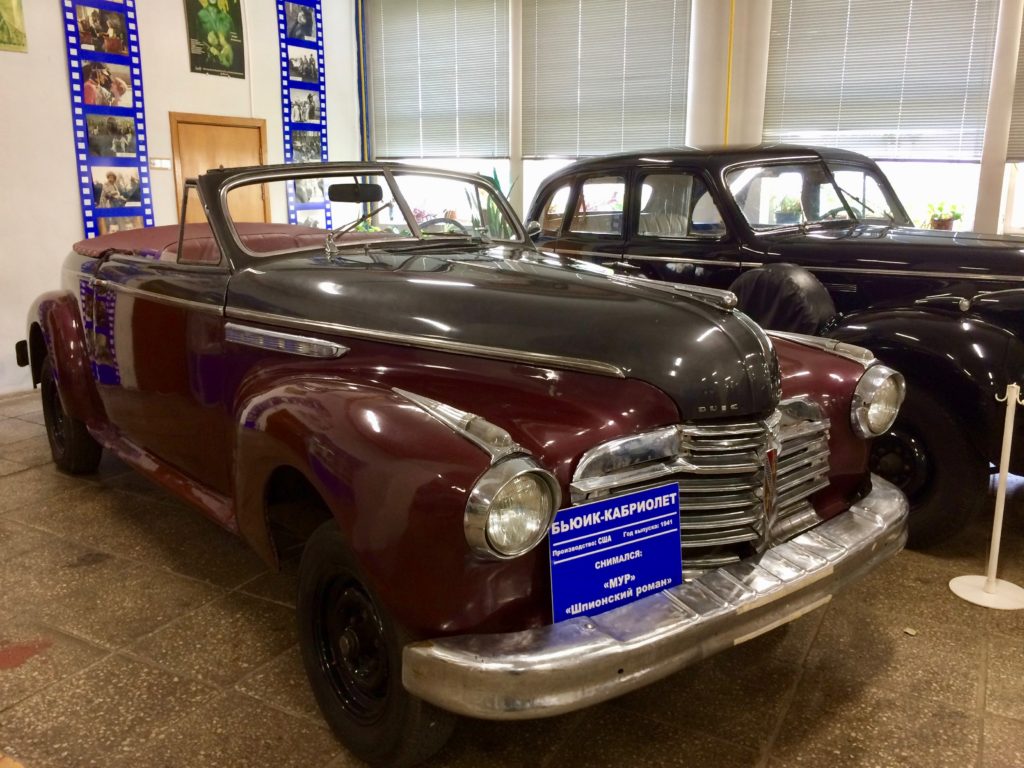

1941 Buick Cabriolet
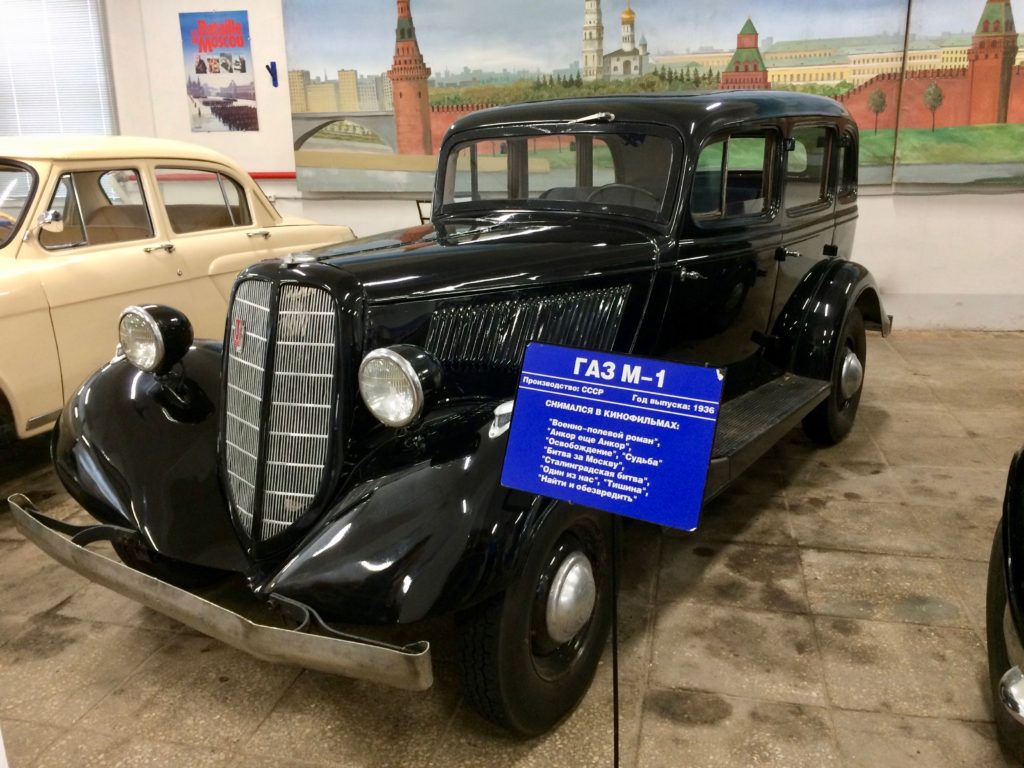

GAZ M-1 (Soviet production, 1936)
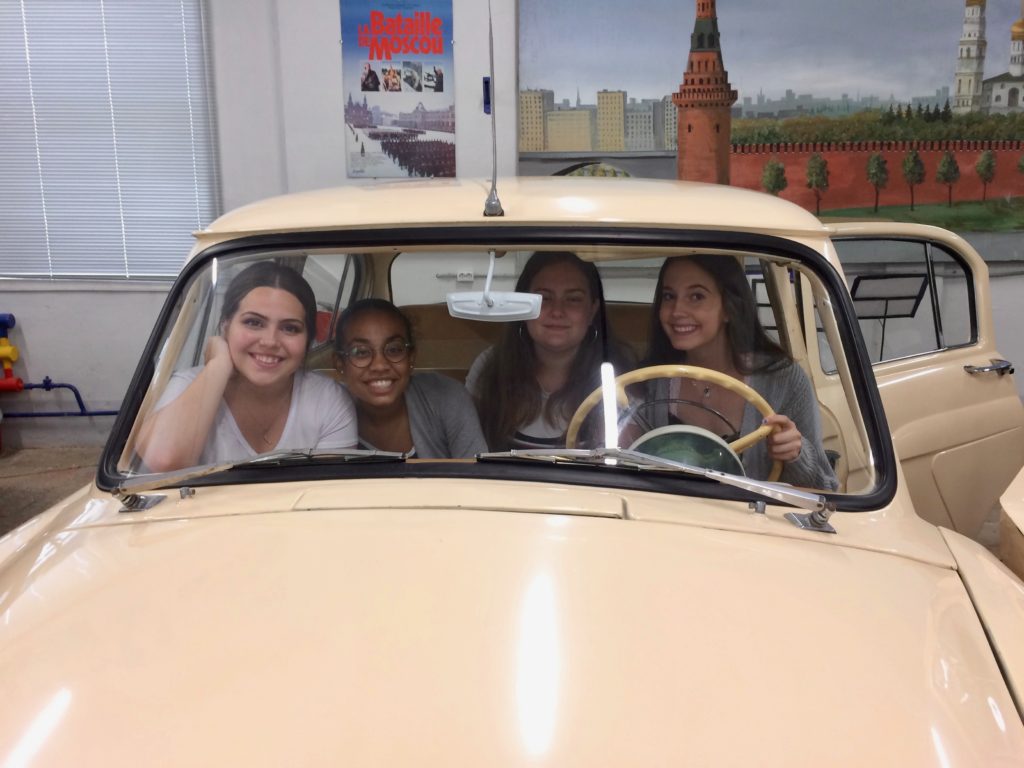

Ava, Andrea, Zoe, and Megan in the iconic Volga featured in the 1960’s films The Diamond Arm and Beware of the Car.
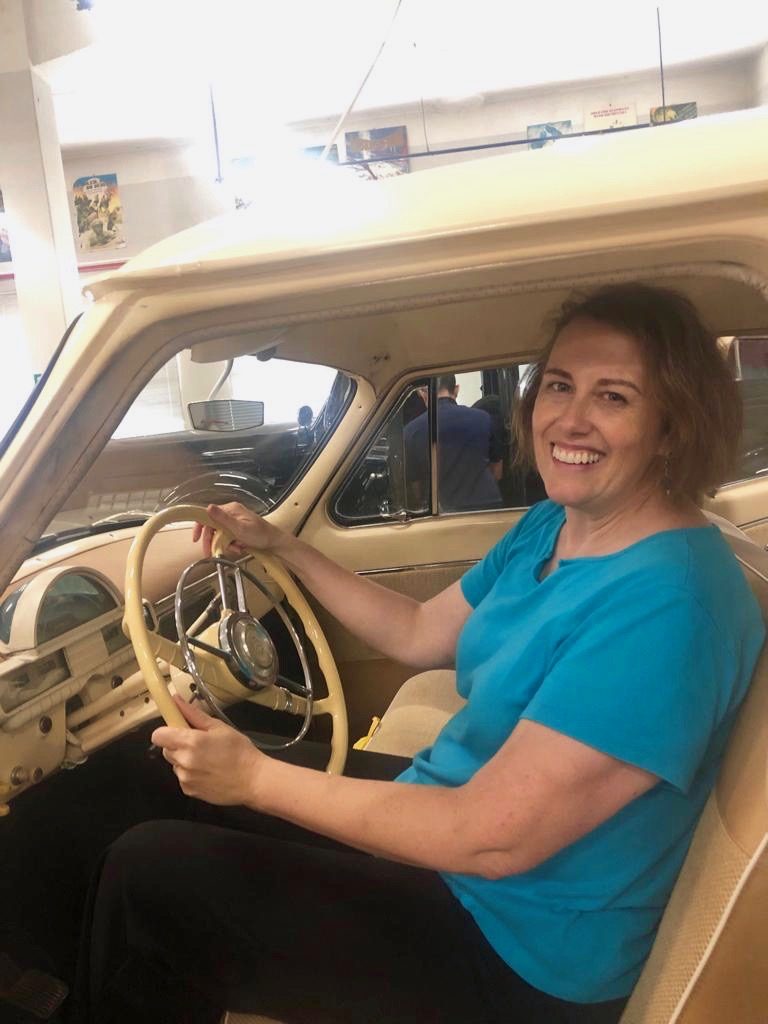

Dr. Chilstrom behind the wheel.
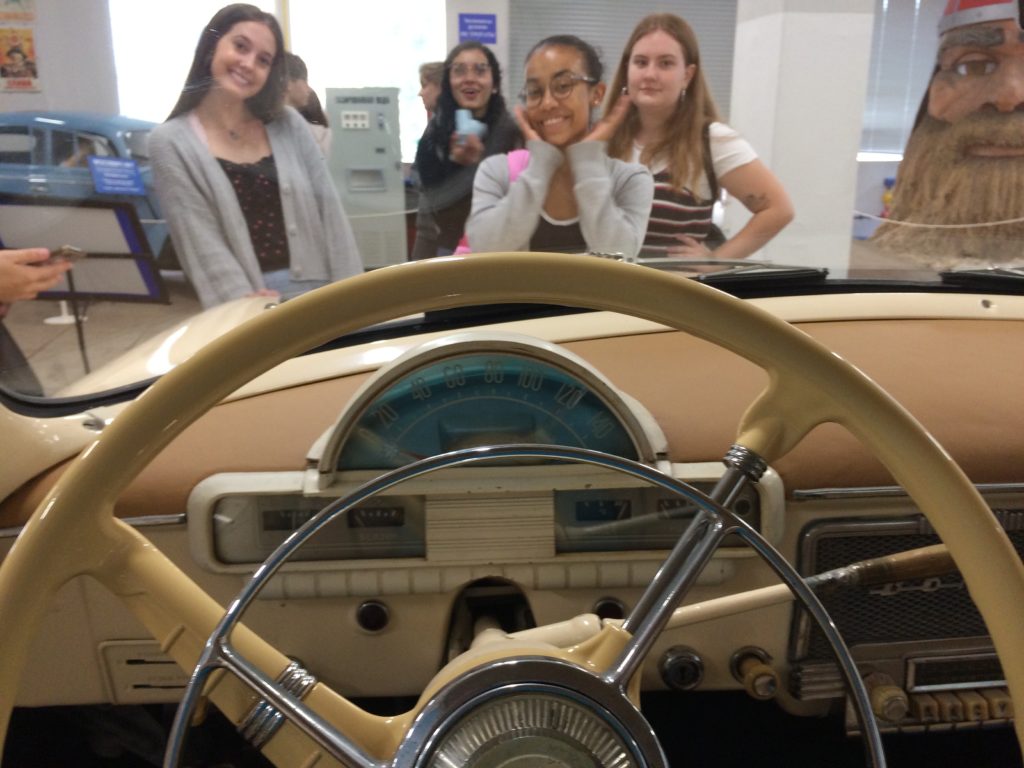

Megan, Marilyn, Andrea, and Zoe look on.
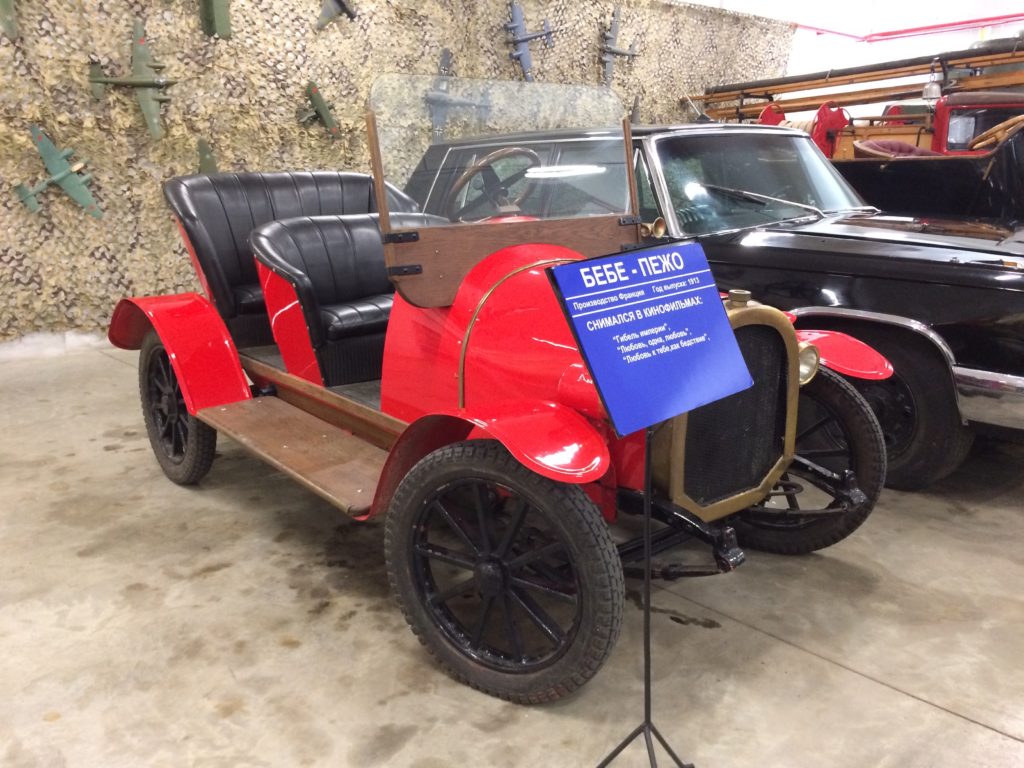

A 1913 Peugeot Bébé (France).
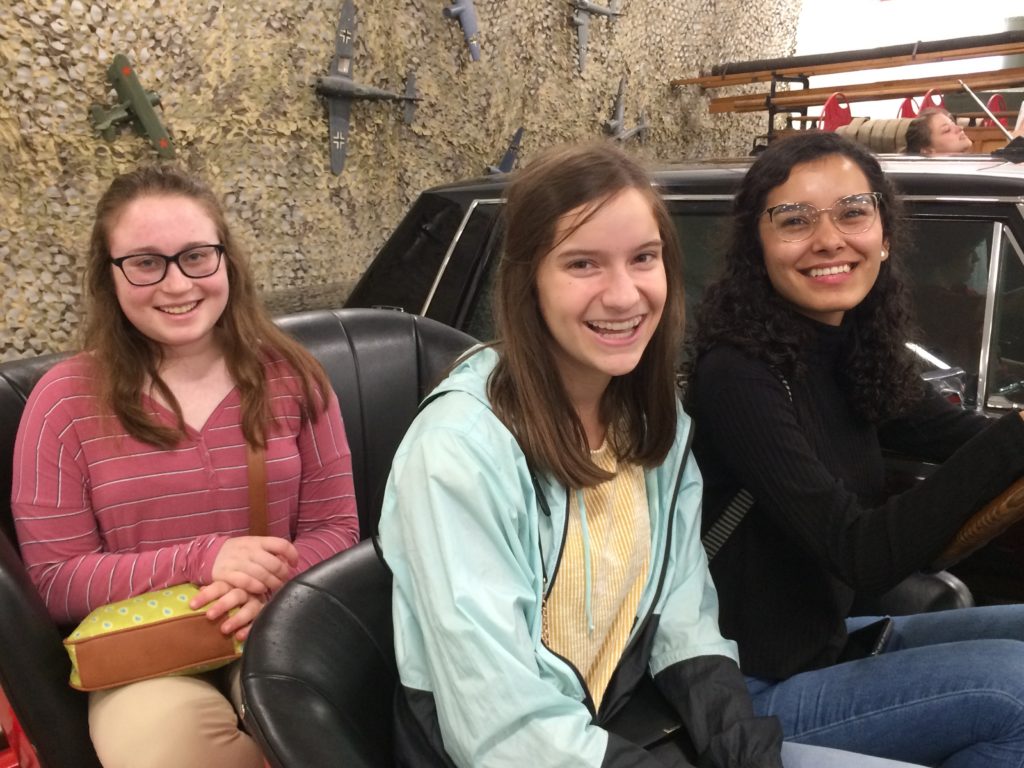

Erin, Katie, and Marilyn like this baby!
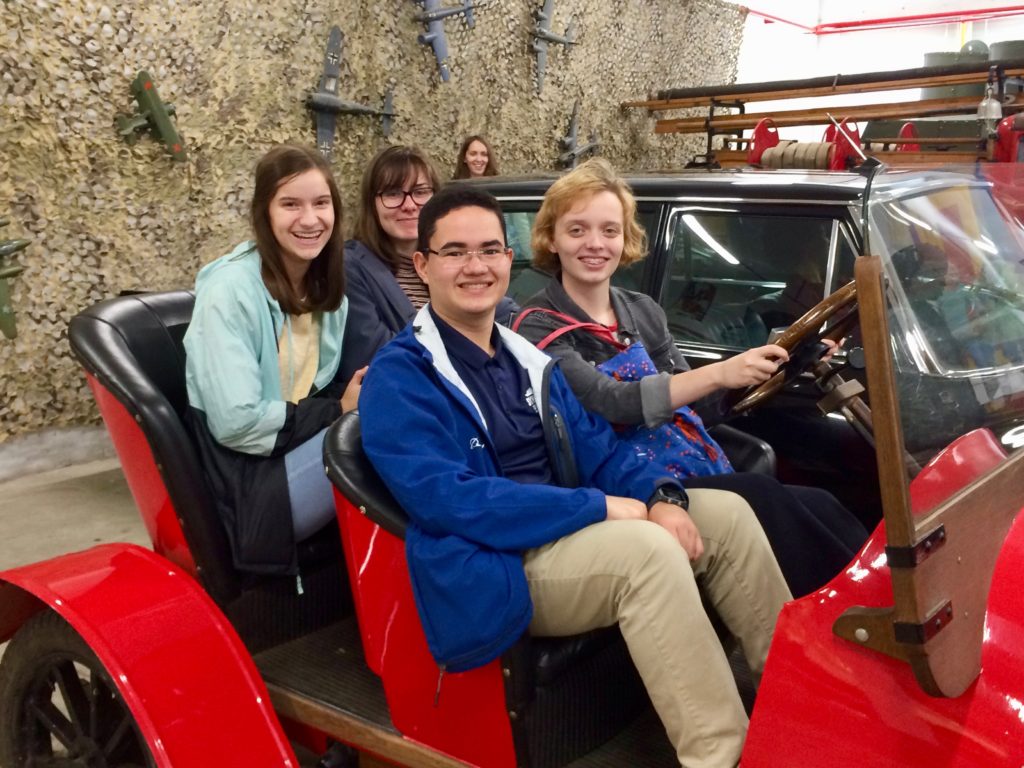

Katie, Jordan, Xavier, and Katya in the Peugeot Bébé.
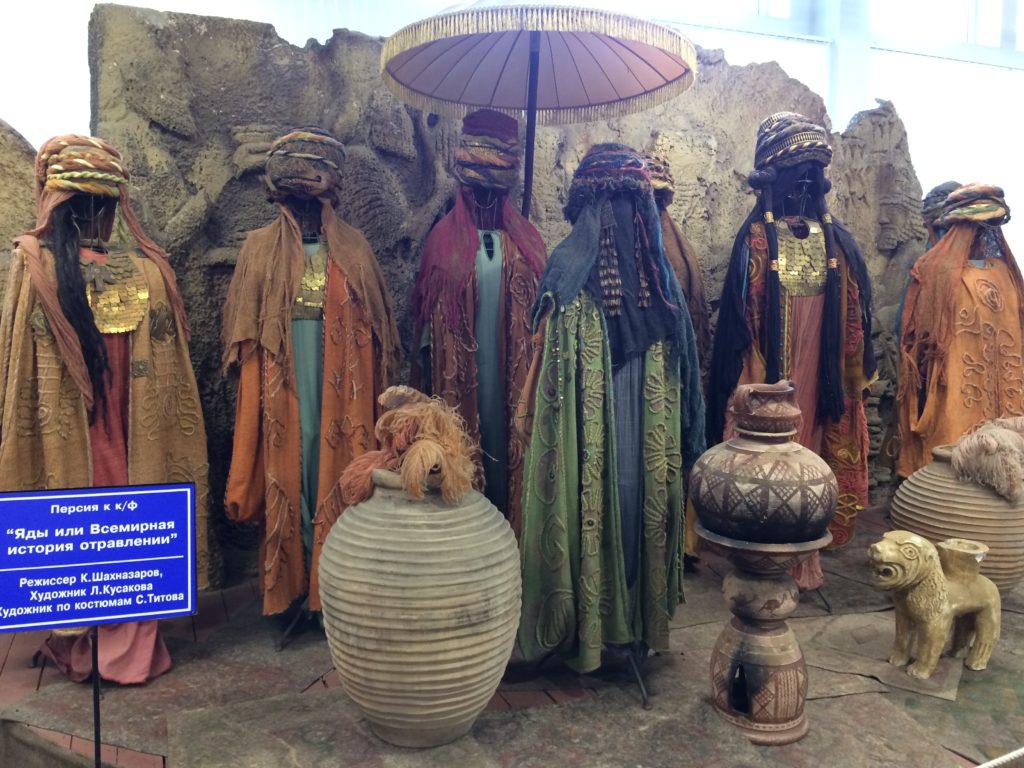

Sets from the 2001 comedy “Poisons, or the World History of Poisoning.”
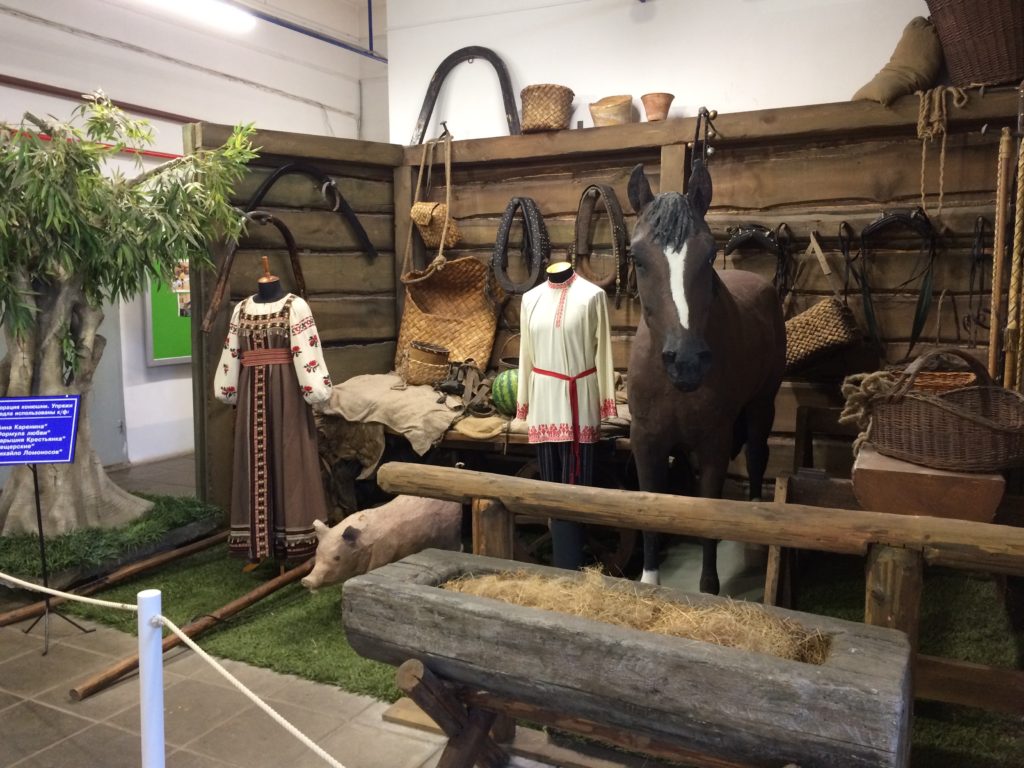

Sets from the 1984 romantic comedy Formula of Love.
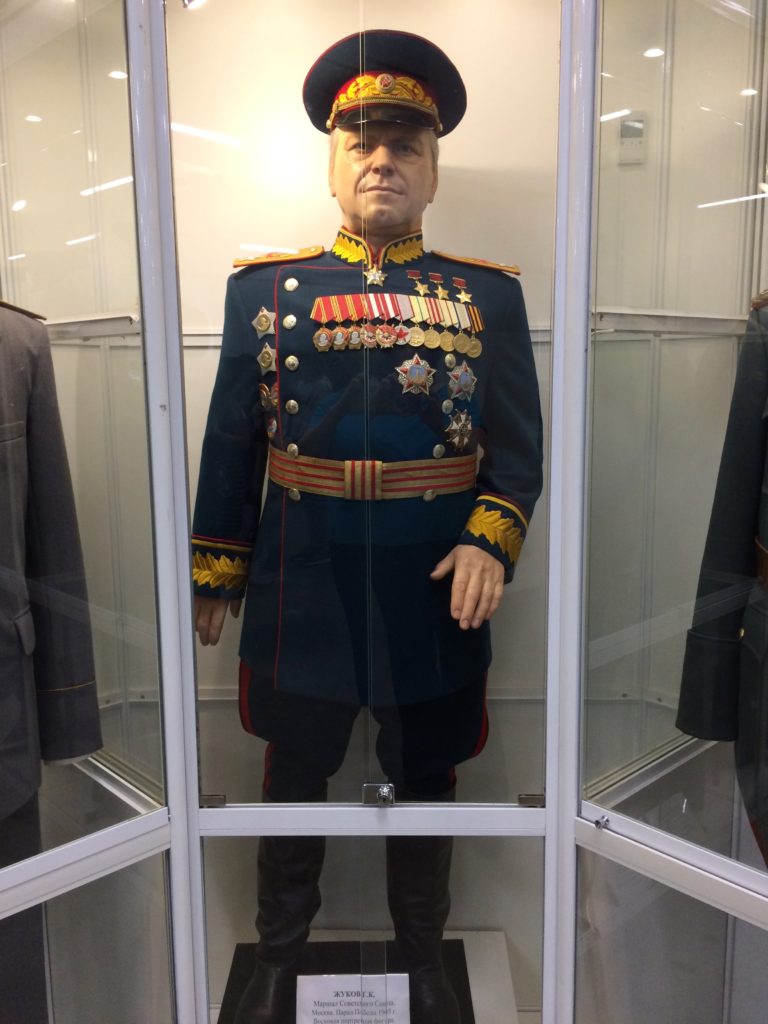

A wax figure of Marshal Zhukov.
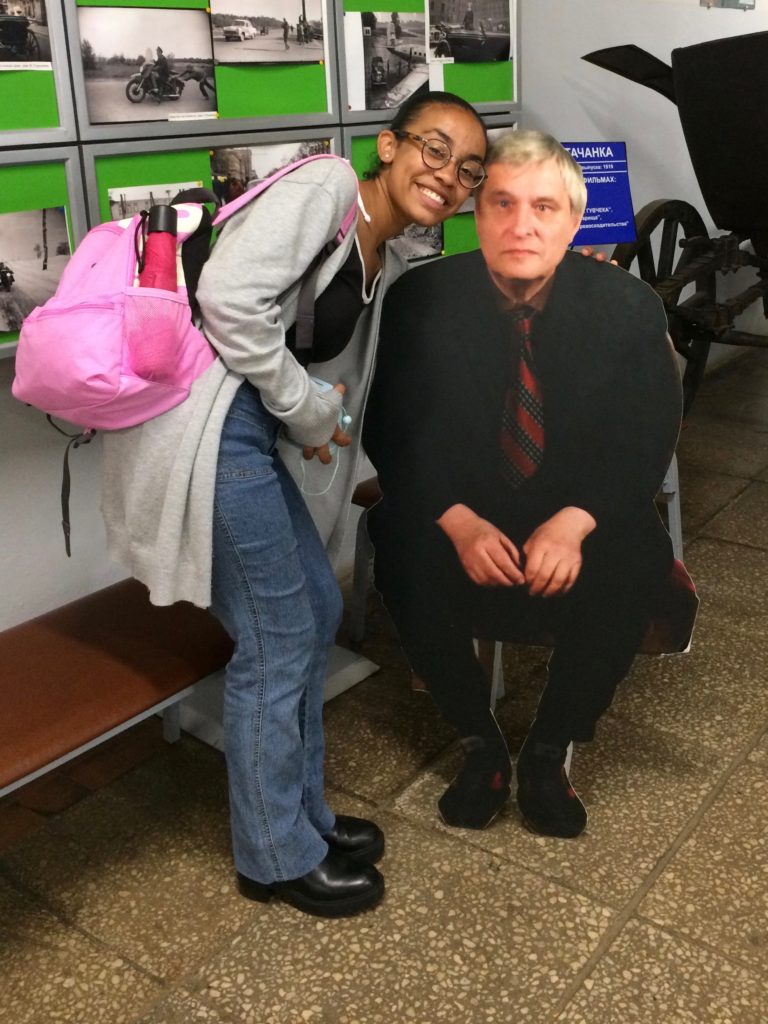

Andrea poses with a cardboard cutout of Oleg Basilashvili, a well-known Soviet/Russian film and theater actor. He appeared in such popular films as Office Romance (1977) and Autumn Marathon (1979). After a short career in politics, he returned to acting with an impressive performance as Woland in the TV miniseries The Master and Margarita (2005).
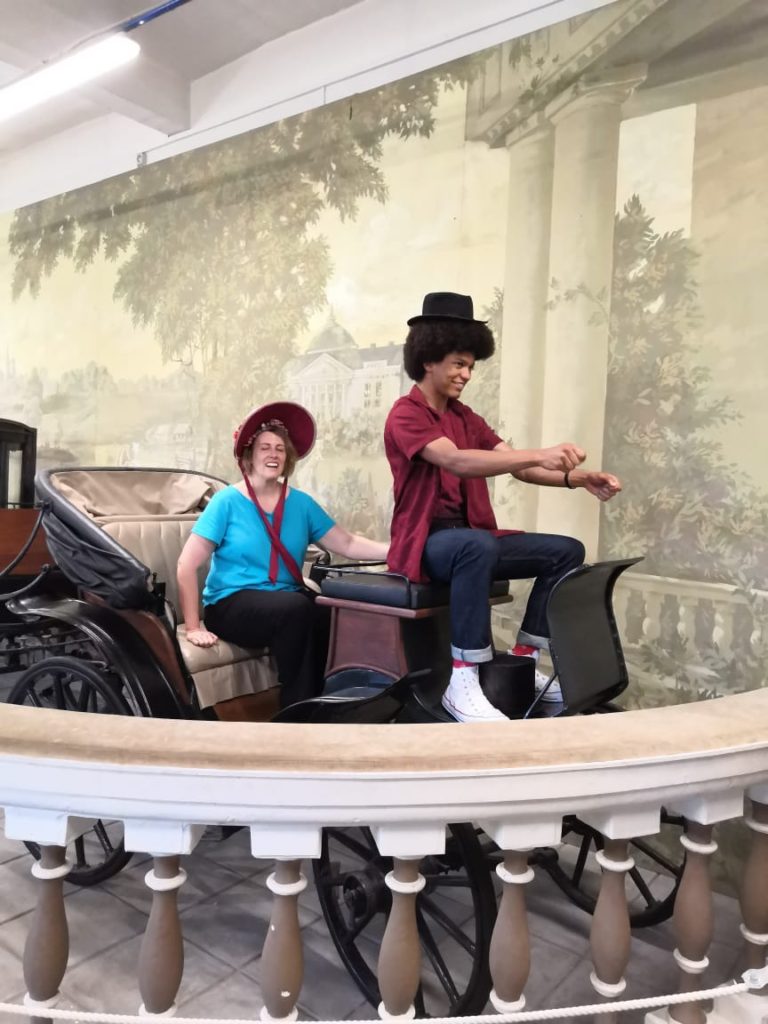

Dr. Chilstrom and Darius enjoy a carriage ride in their period hats.
Meanwhile, back at school….
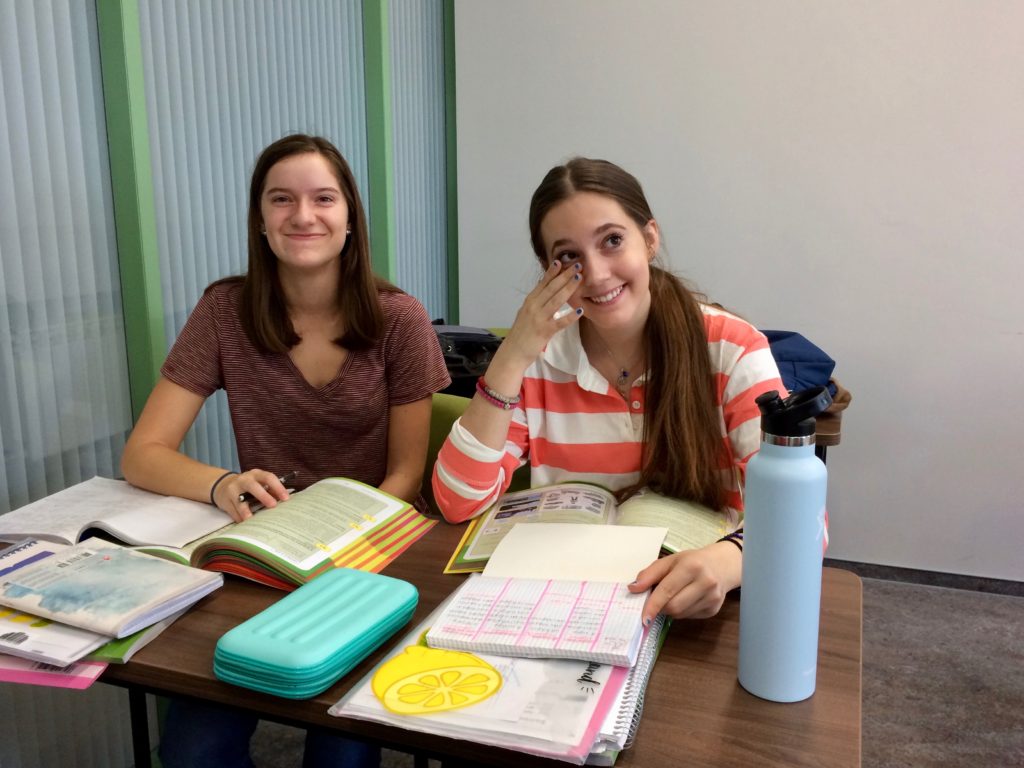

Katie and Megan
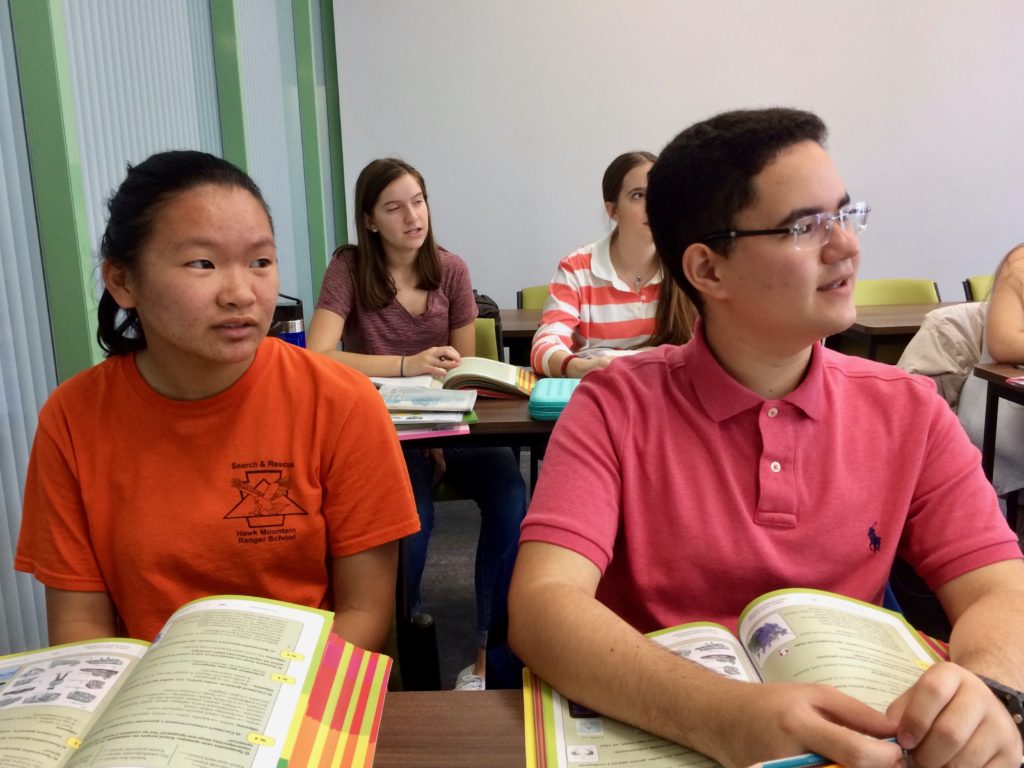

Elizabeth and Xavier
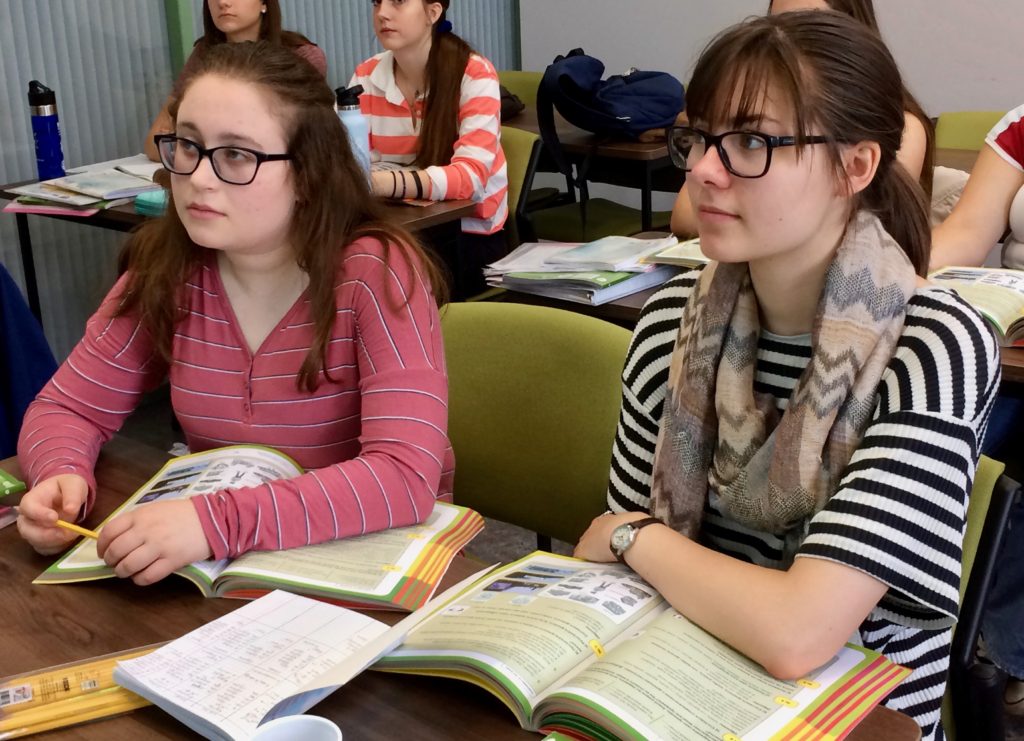

Erin and Jordan
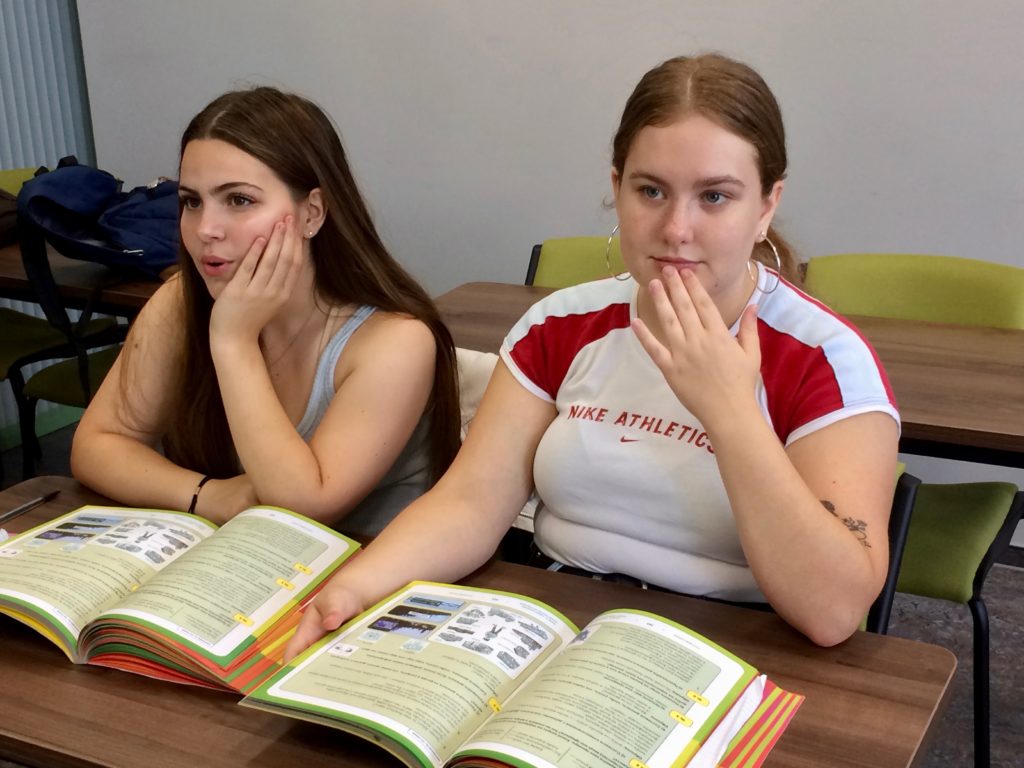

Ava and Zoe
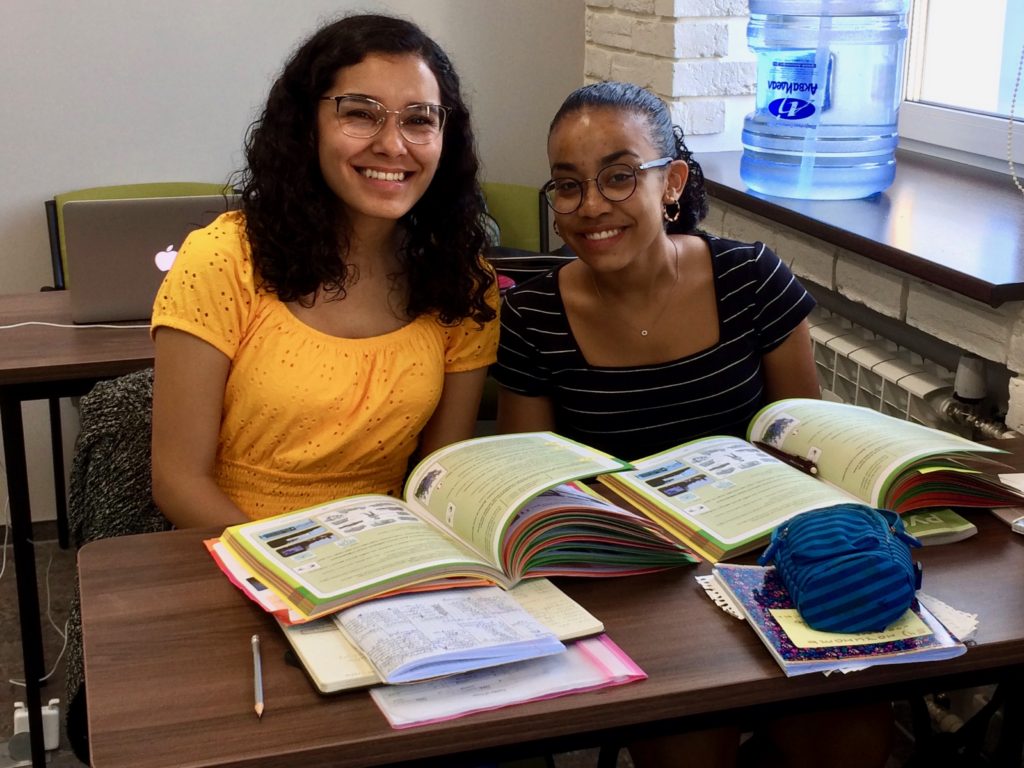

Marilyn and Andrea
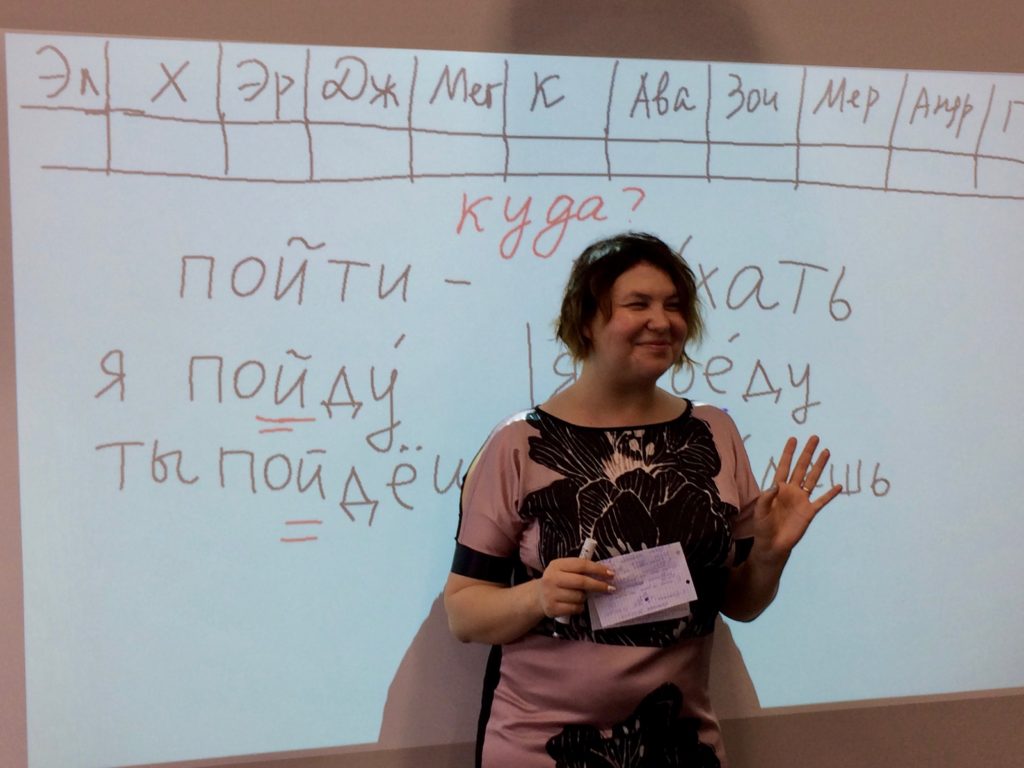

Galina helps the students practice verbs of motion.
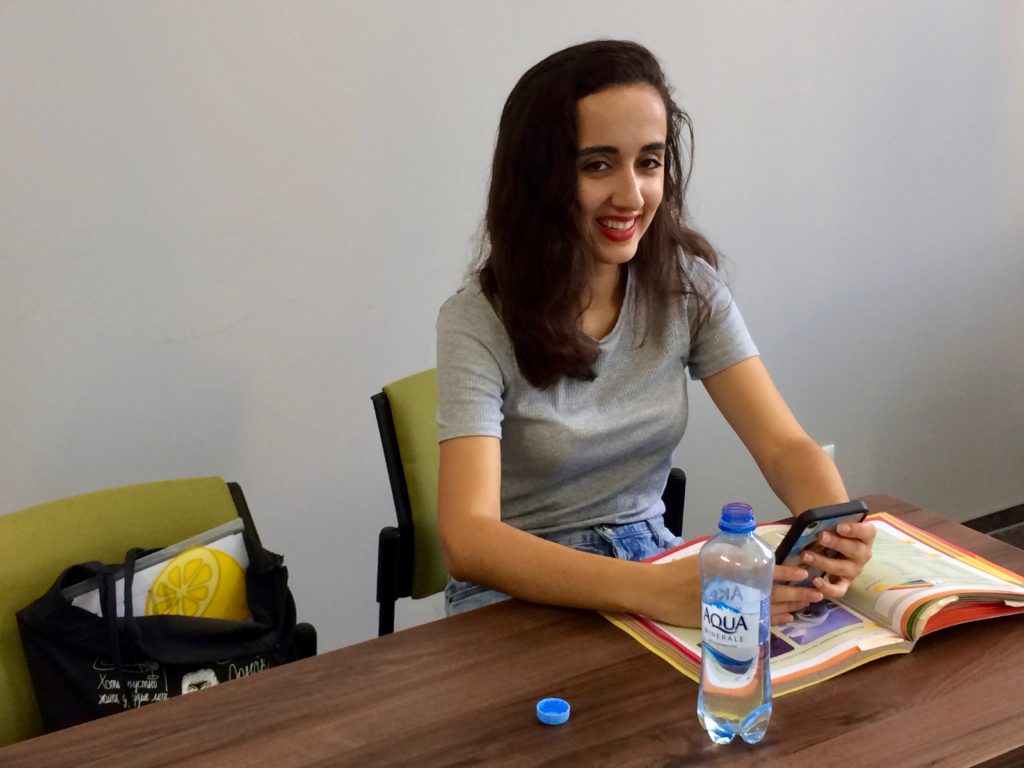

Gabriella
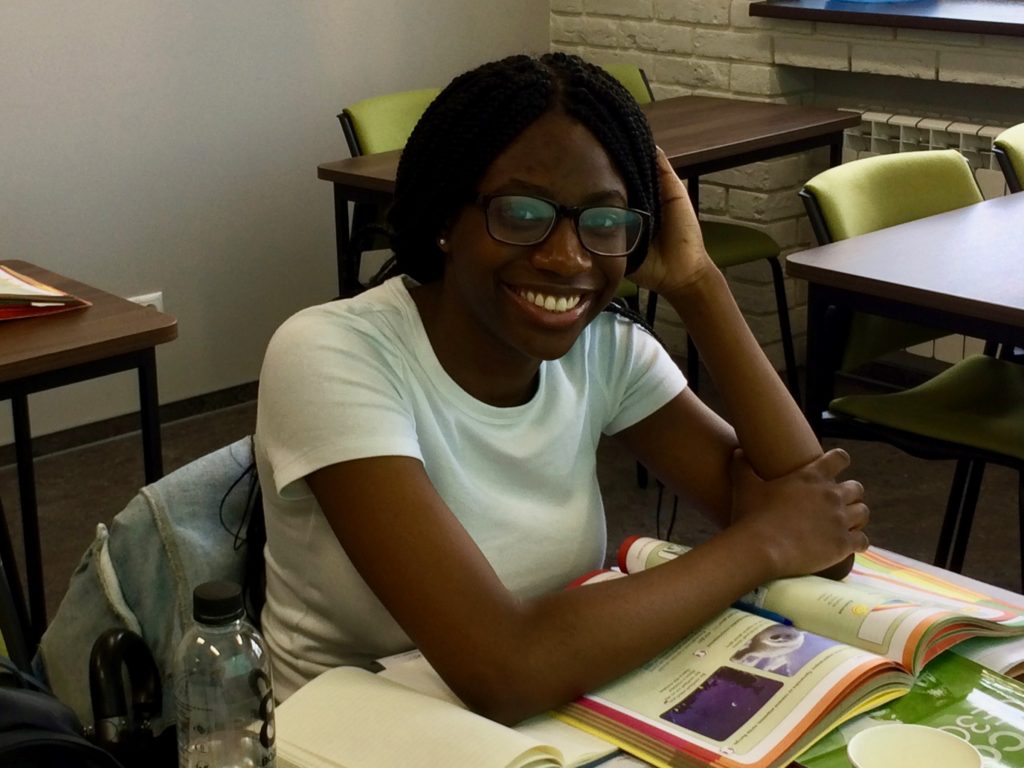

Taina
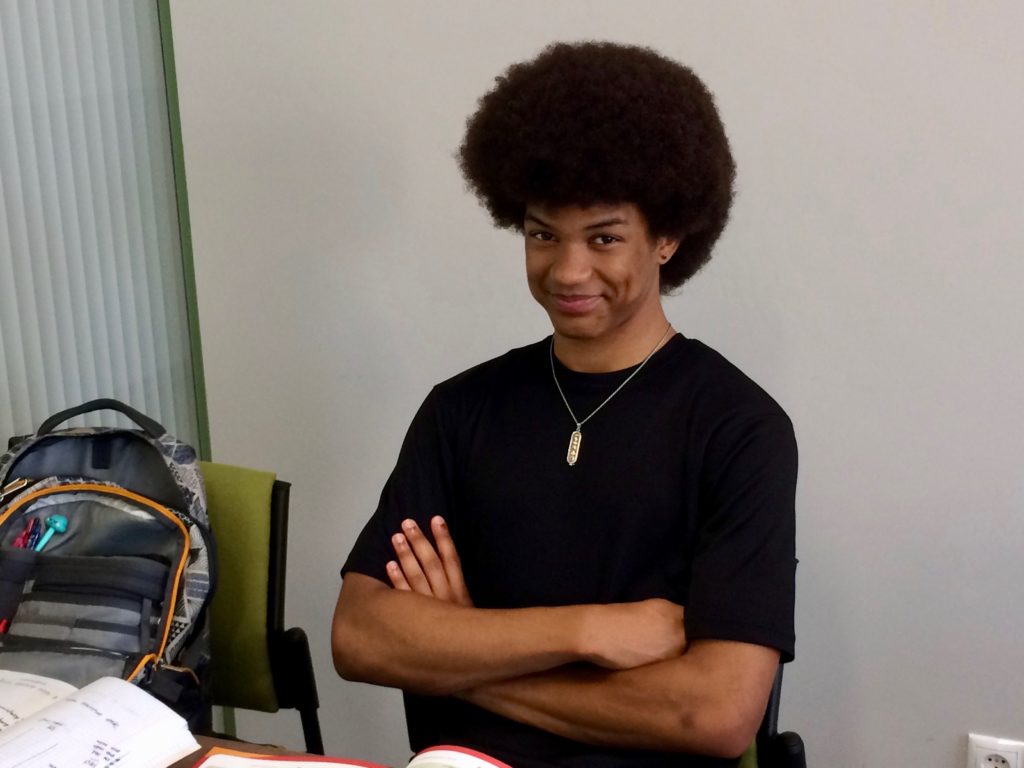

Darius
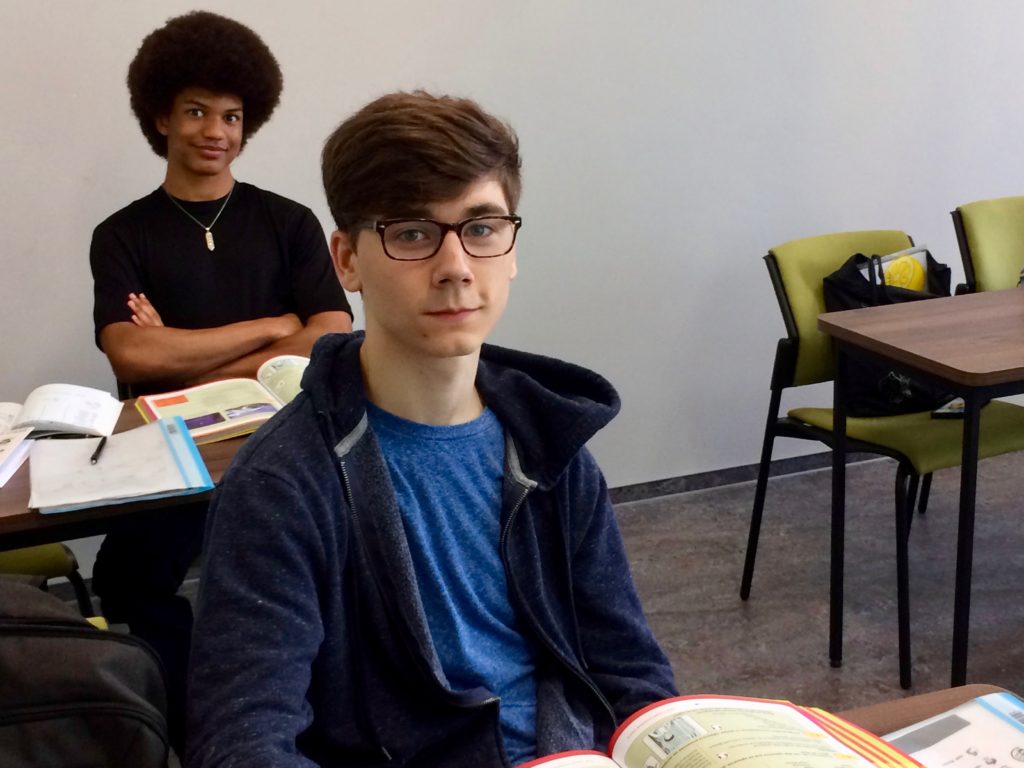

Jake
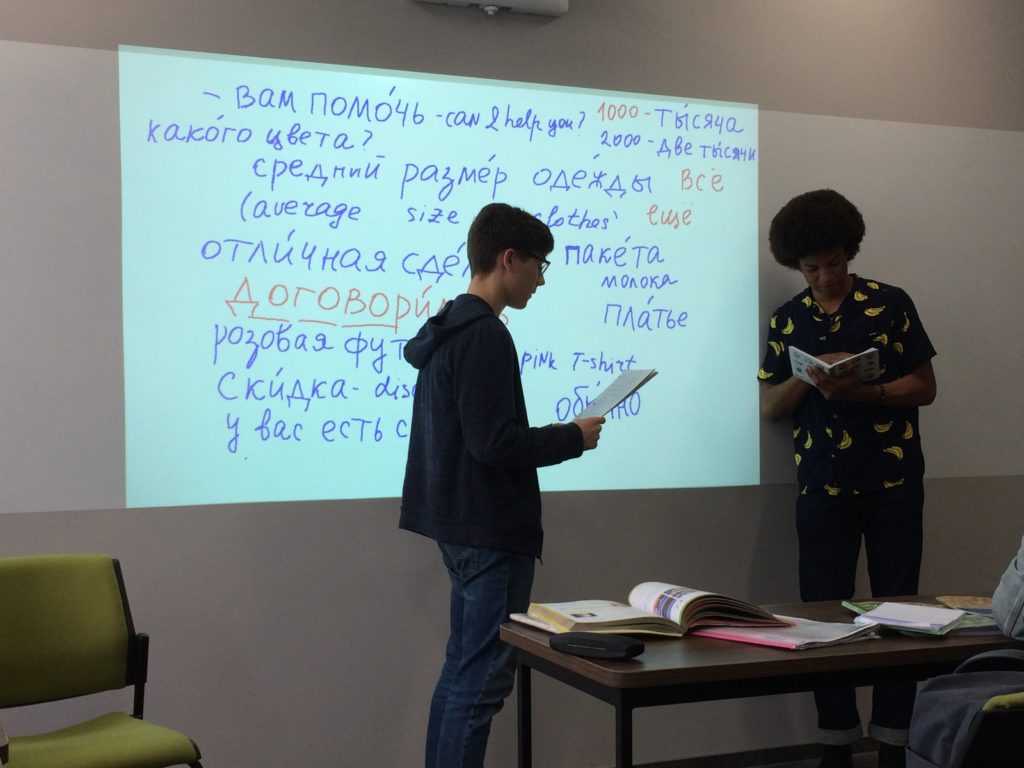

Jake and Darius perform a dialog.
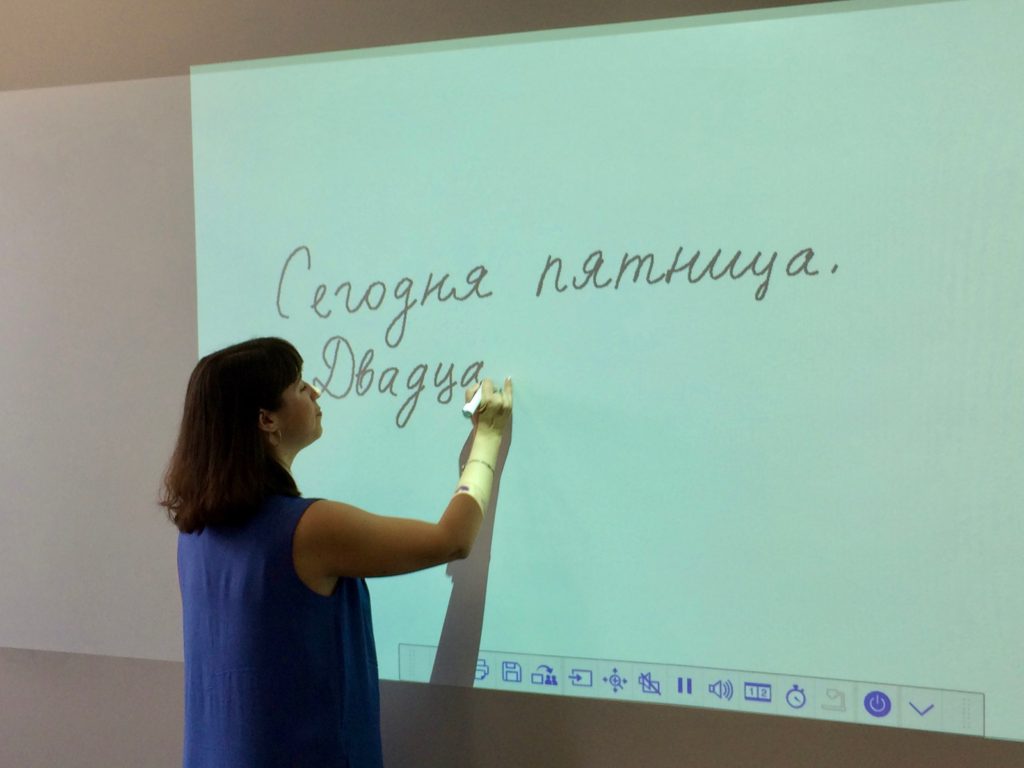

Nataliya starts the day’s lesson by writing the day and date on the board.
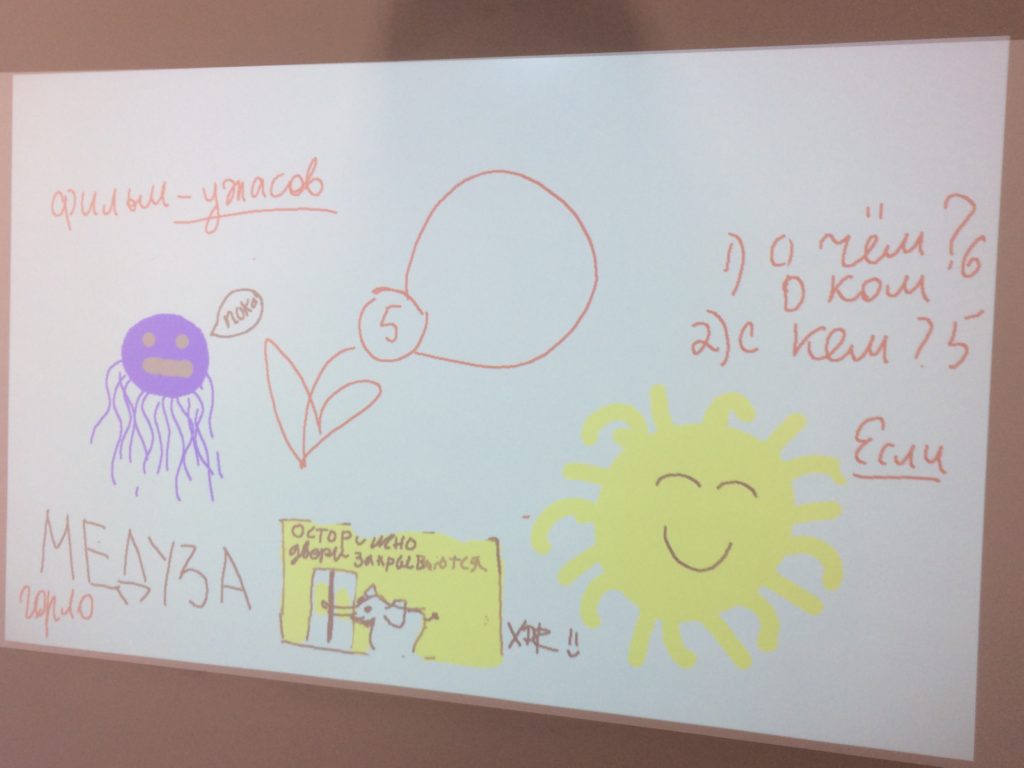

Budding artists created these masterpieces: jellyfish by Katie; elephant in the metro by Xavier, sunshine by Andrea.
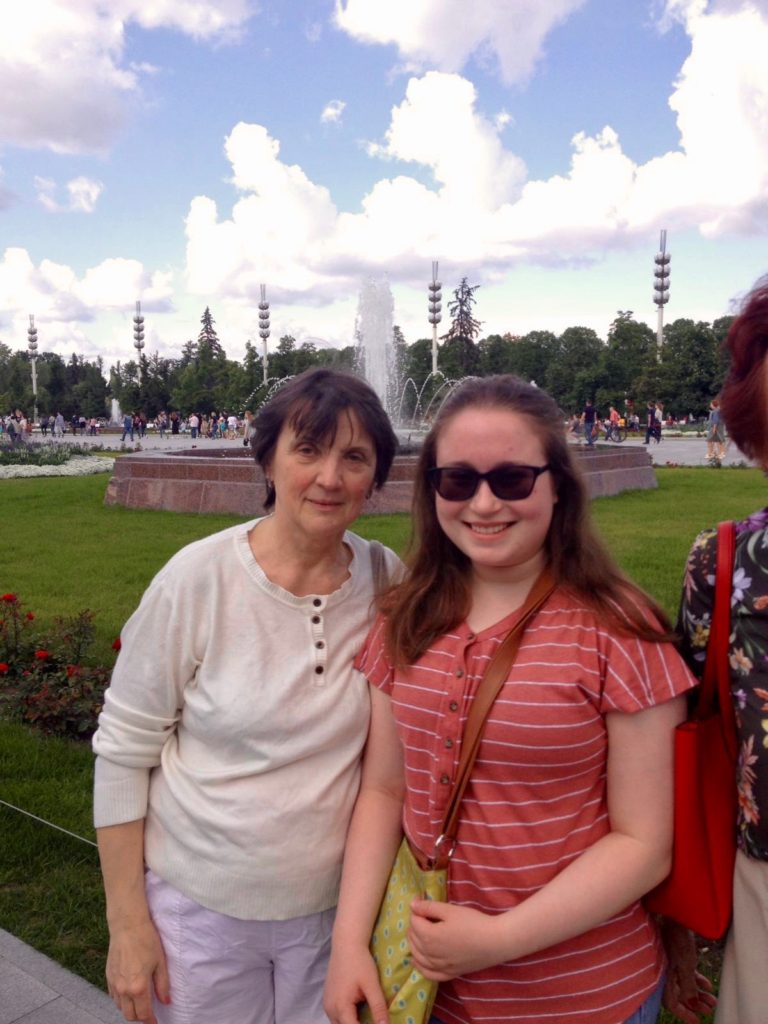

Erin with her host mom at VDNKh.
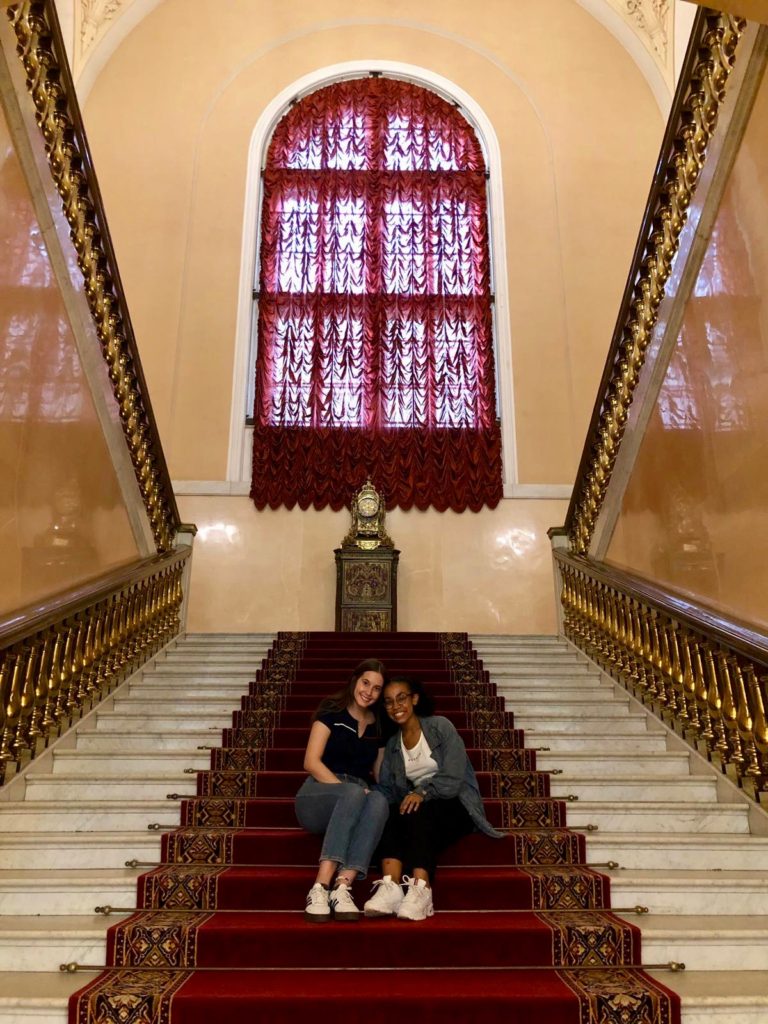

Megan and Andrea at the Kremlin Armory.
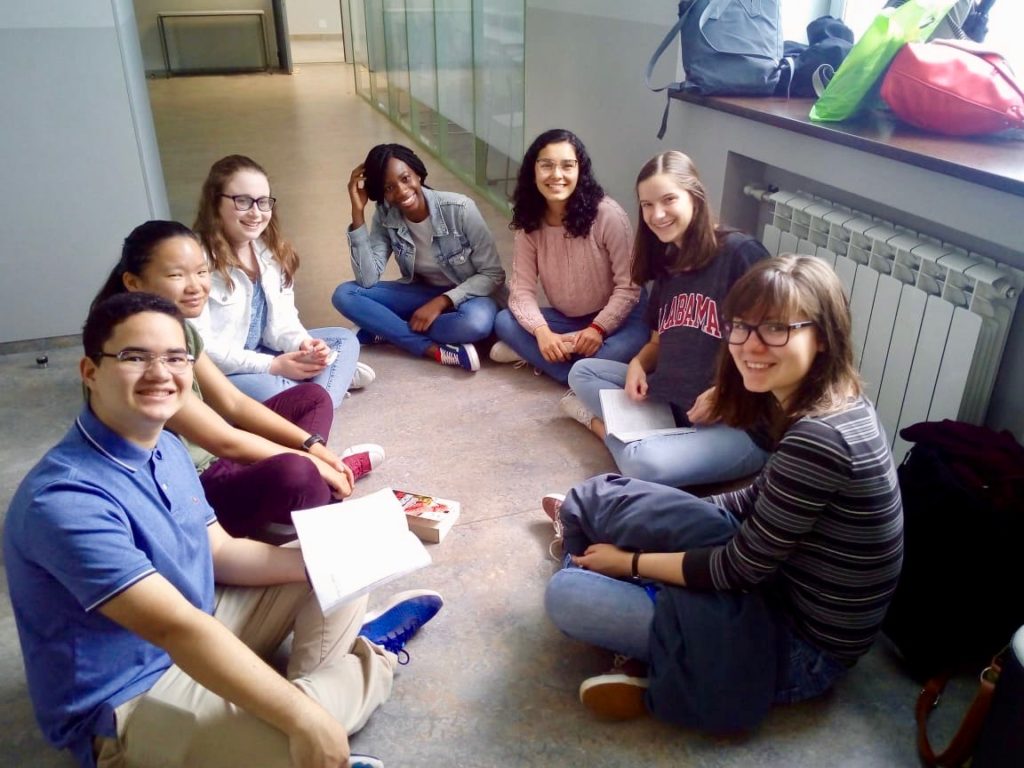

Studying together before class begins: Xavier, Elizabeth, Erin, Taina, Marilyn, Katie, and Jordan.
Looking forward to week five!
